Our Blog - Lombardy 2025 - Verona, Italy Part 1
The largest Italian city visited on this trip, Verona is the "city of Romeo and Juliet". But it is much more than just that ... a population of over 700K in the metropolitan area, a Roman Arena, a Roman amphitheater, and a fortress (not to mention churches, churches, and more churches).
Verona became a Roman colony in 89 BC and remained Roman until around the 5th century AD when the Goths took over for a couple of hundred years. It was ruled by the Kings of the Lombards for a time, the Holy Roman Empire for a while, and Austria for a time. Between the 13th and 14th centuries, the city was ruled by the della Scala family. Under the rule of the family, in particular of Cangrande I della Scala, the city experienced great prosperity, becoming rich and powerful and being surrounded by new walls.
There were definitely some dark periods in Verona, including a plague from 1630-1631 that killed 60% of the population of the city, Then the advent of fascism and Benito Mussolini, anti-semitic laws (1938), the invasion by Nazi Germany (1943), and the Verona trial of Galeazzo Ciano, who was executed on the banks of the river.
We will talk about Romeo and Juliet in Part 2 of the Verona Blog, but there are actually 2 of Shakespeare's plays that are set in Verona: Romeo and Juliet and The Two Gentlemen of Verona. It is unknown if Shakespeare ever visited Verona or Italy, but his plays have lured many visitors to Verona and surrounding cities.
We started on the Northern edge of the city, taking the Funicular up to the Castel San Pietro. The area where the castle was built was a strategic point for control of the river below. There was a Roman temple here, and then a church in the 8th century. A castle was built in 1393 although most buildings were destroyed by Napoleon's army in 1801. What you see today is an Austrian barracks that was built in the 1850's. While you can't go in the barracks (at least, I didn't find a way to), it has a great view of the city!
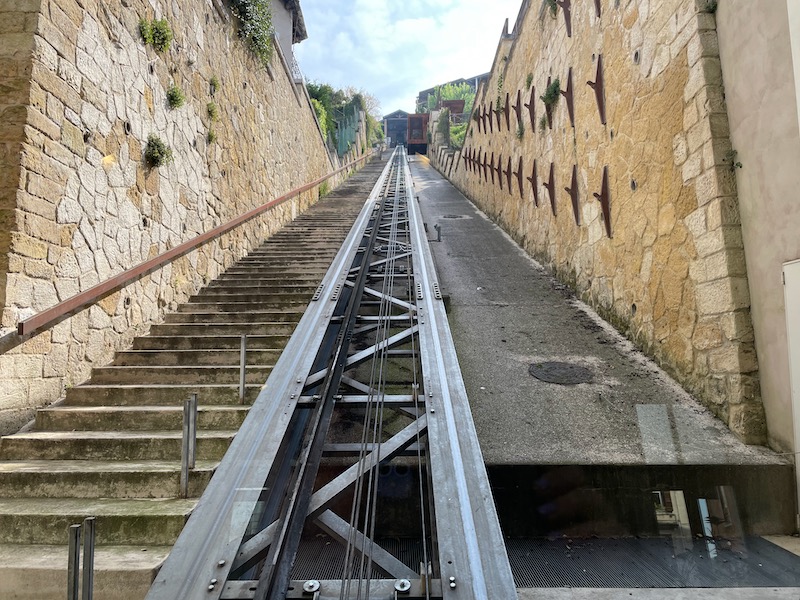
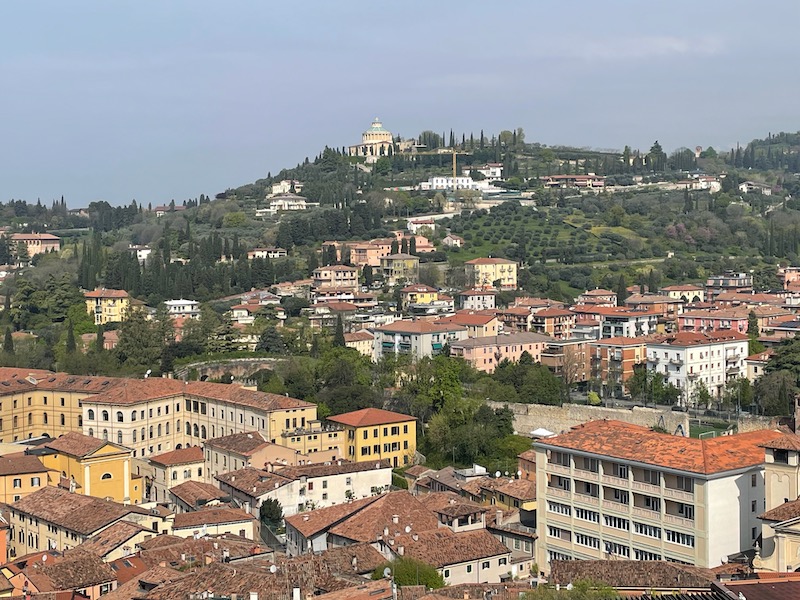
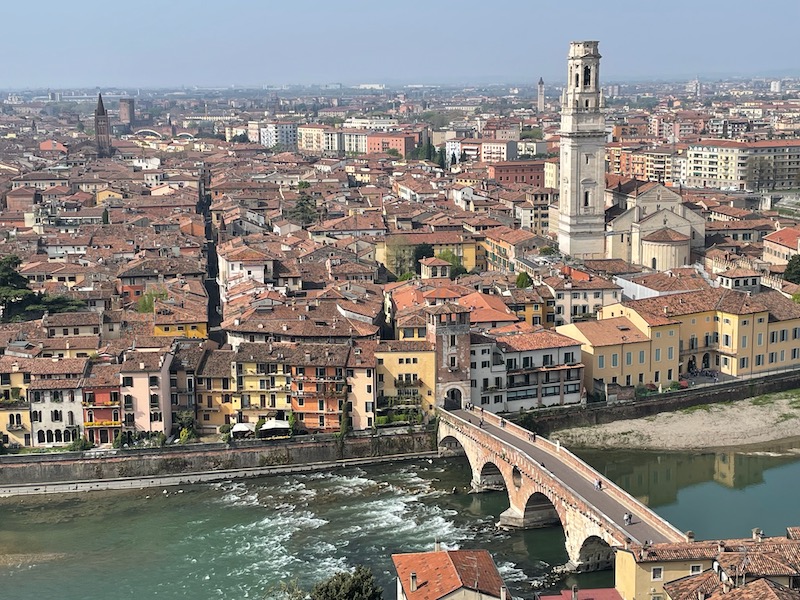
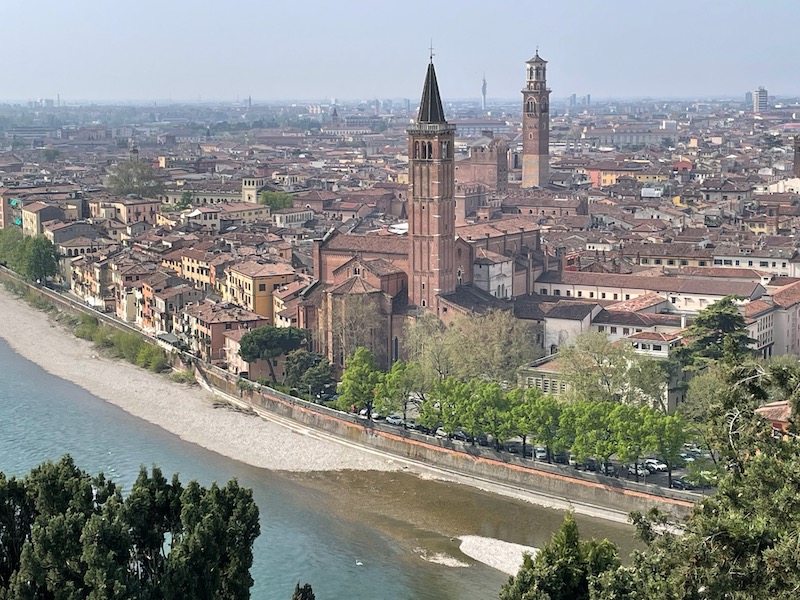
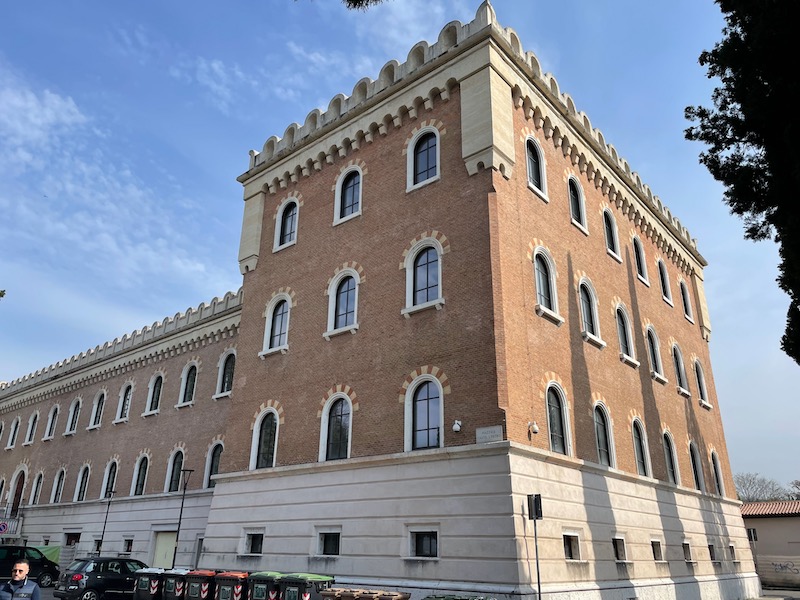
We stopped by the Roman Theater although we didn't go inside (a bit of a disagreement regarding puppies in backpack's with the guy at the ticket counter and by the time he agreed with me that we COULD take Lucy inside in her backpack, I decided I didn't want to go in!) but I grabbed a couple pictures. It was built in the last 1st century BC and, like most Roman theaters, the seating goes up the slope of the hill. During the Middle Ages, it fell into ruin, so much so that houses were built on top of it. In the 19th century, a wealthy merchant bought the entire area, knocked down all of the houses, and started excavations of the theater. It is now used for open-air concerts and shows.
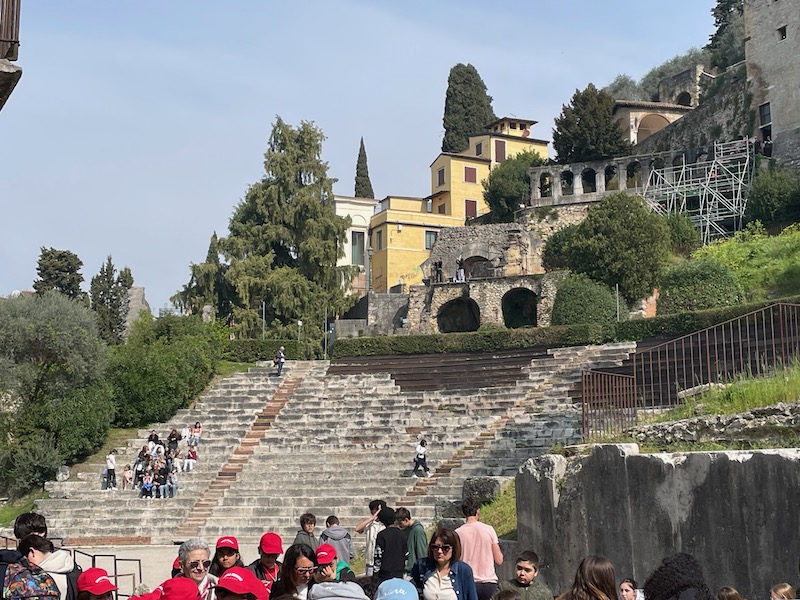
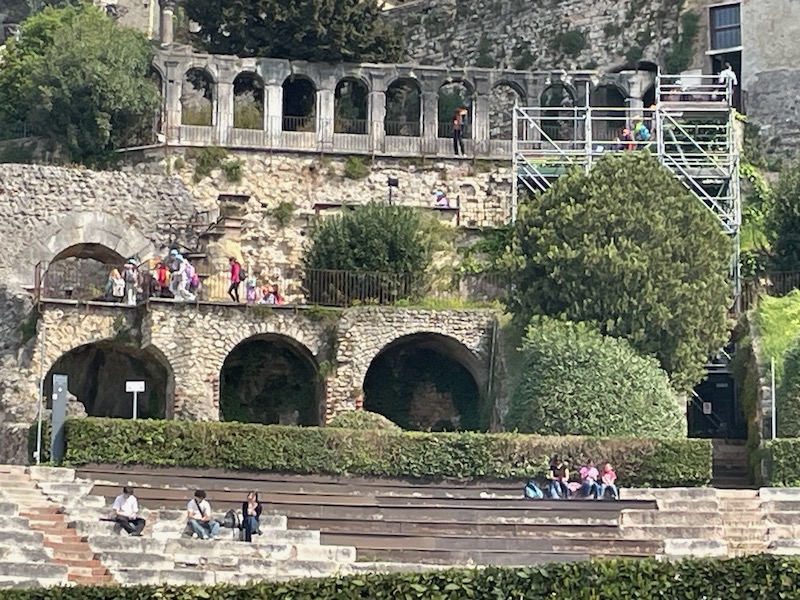
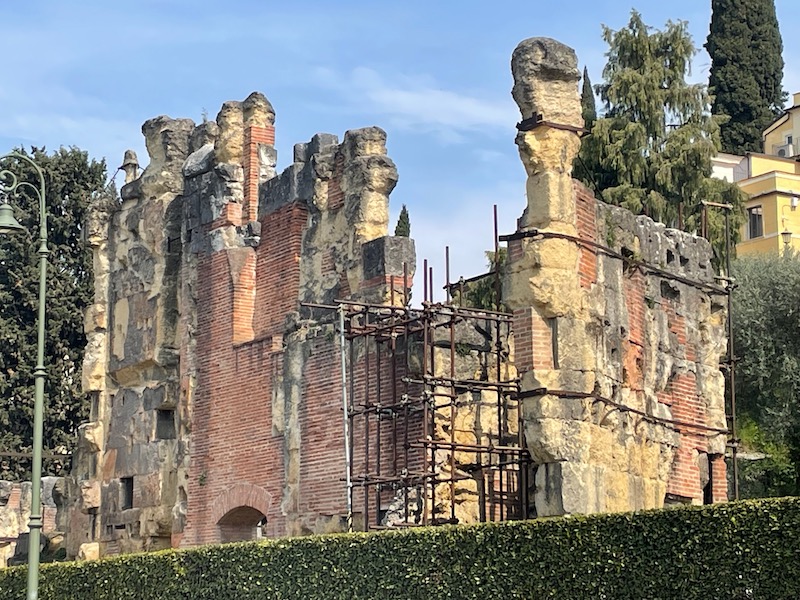
The Ponte Piéra is the oldest bring in Verona over the Adige river and is the only one that remains from the Roman era. There are 5 arches: the 2 on the right-hand side, out of white stone, are still from Roman times. The last arch on the left and the tower date from 1298, and the middle ones were done in the early 1500's. Although ... I have to admit that the arches have not literally been there since Roman times ... the retreating German soldiers blew up the bridge in 1945 and it was rebuilt using as much of the original material as they were able to recover.
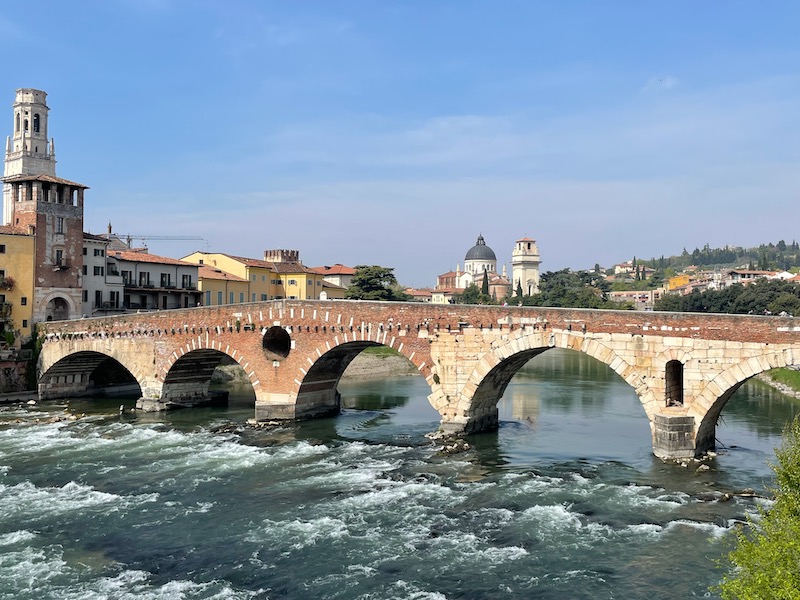
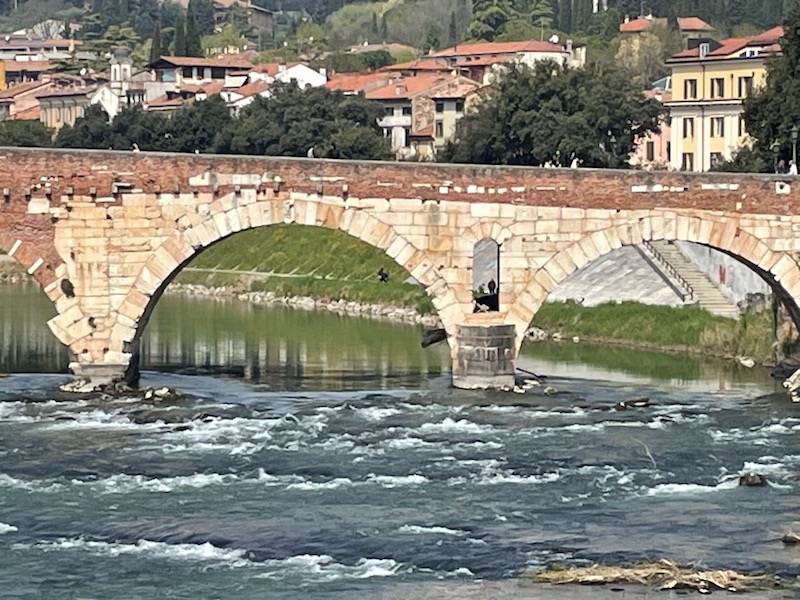
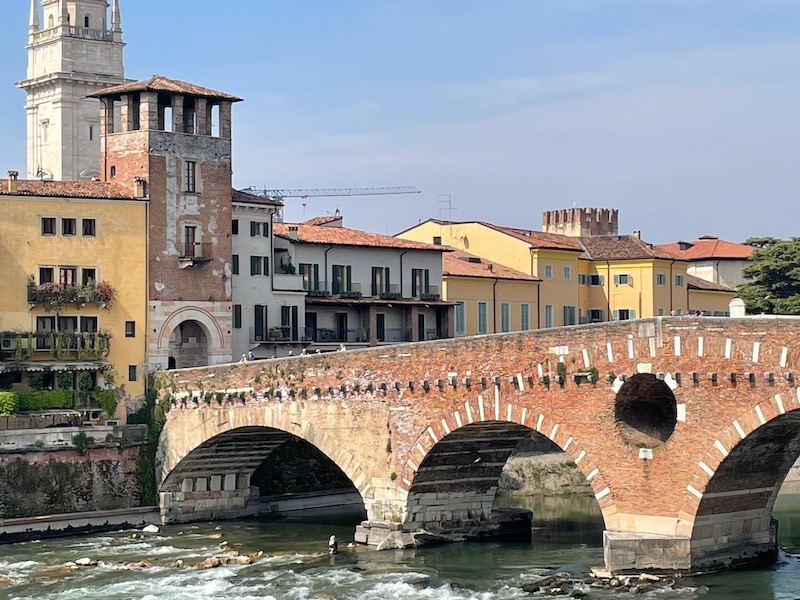
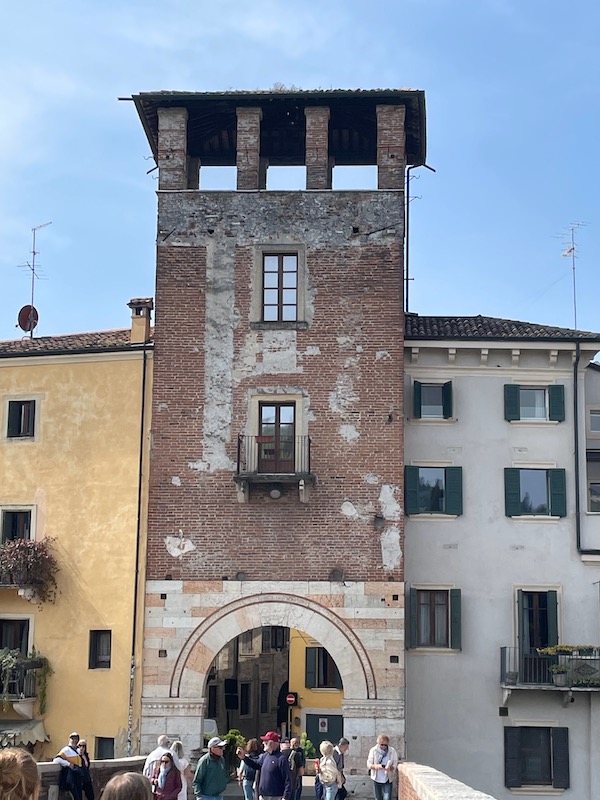
The Gavi Arch is a very rare example of a monumental arch for private use in the Roman era. It was built around the middle of the 1st century to celebrate the Gavia family, who were obviously very powerful.The arch was erected outside the city walls but seems to have been moved a few times
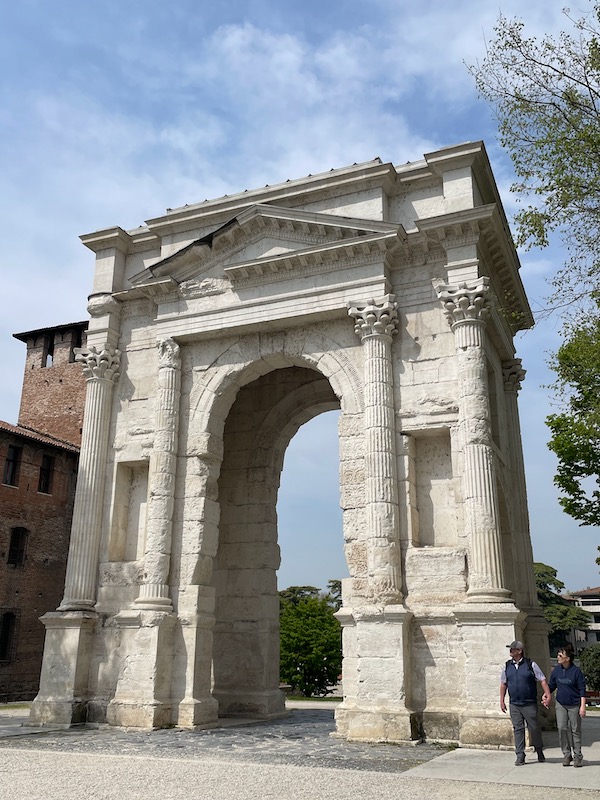
You may start getting sick of churches and palaces :-) This is Palazzo Canossa, home to the Canossa family who settled in Verona in the 15th century. The façade is pretty typical except for the statues along the top. The statues symbolize arts, sciences or virtues. They are made of white Costozza stone and are arranged in a symmetrical and spectacular way, four facing right, four facing left. But the information that I have found indicates that "who" or "what" each statue represents is still unknown.
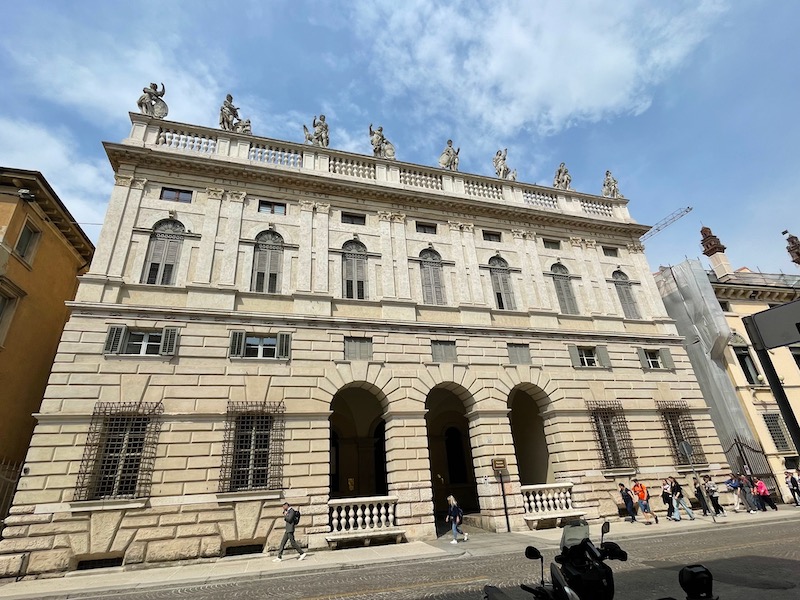
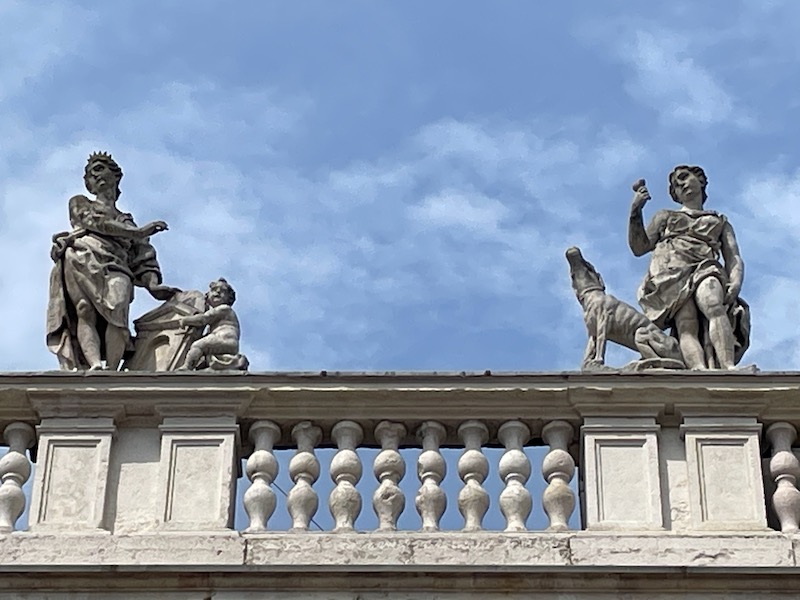
The Palazzo Muselli is undergoing some work, but the roofline is what caught our attention. It was built by the Muselli family, one of the richest in Verona in the 17th century. There are 3 majestic tower chimneys on the roof although I'm not sure what the buildings are that are on top. If you want to live in the palace, you may be able to purchase an apartment there, each with its own garage.
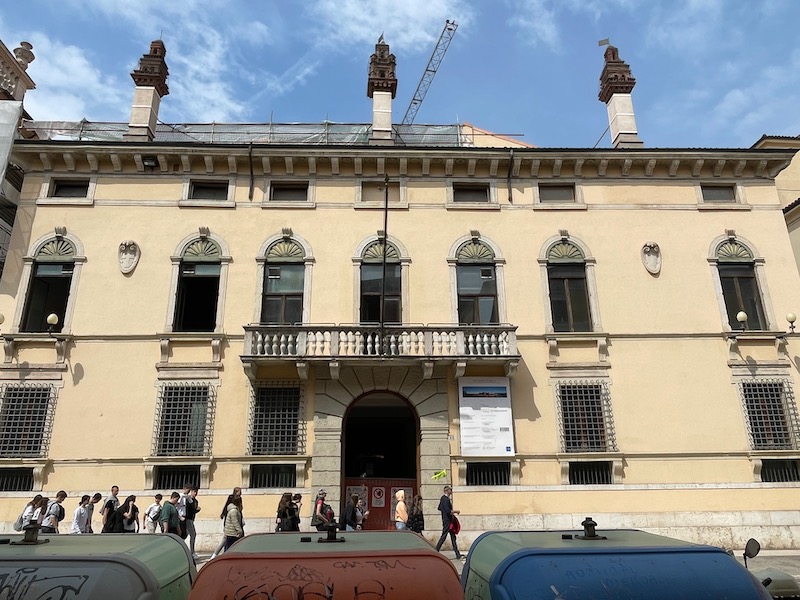
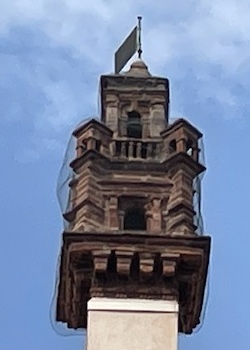
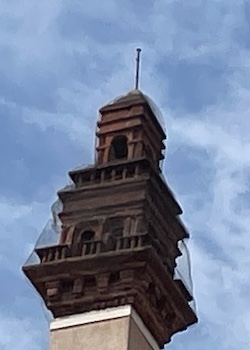
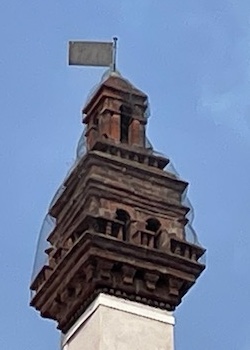
Another palace, this time the Palazzo Bevilacqua, dating back to the 16th century (also for a rich Veronese family). The Bevilacqua family was one of the oldest and most important families in Verona, whose members were initially timber merchants and raftsmen. The most prominent feature of the façade are the busts of Roman emperors over the arches, a reference to the noble origins and greatness of the family.
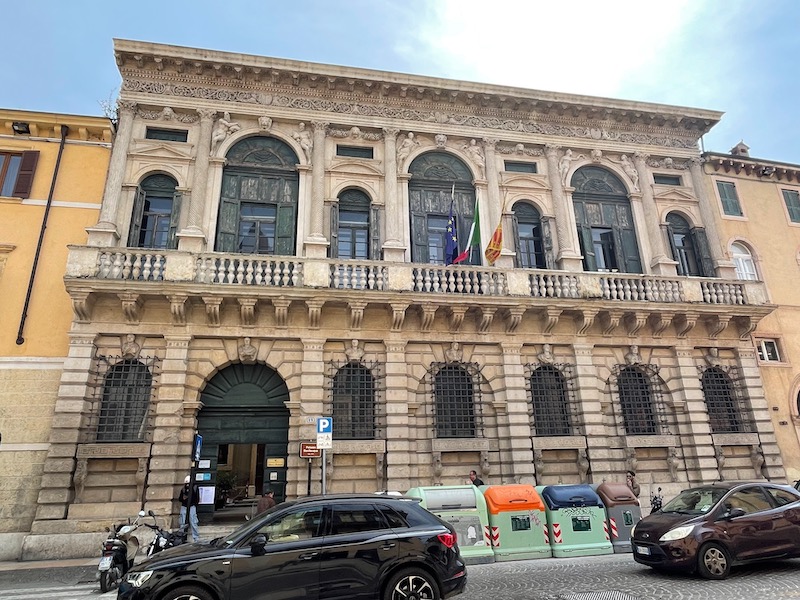
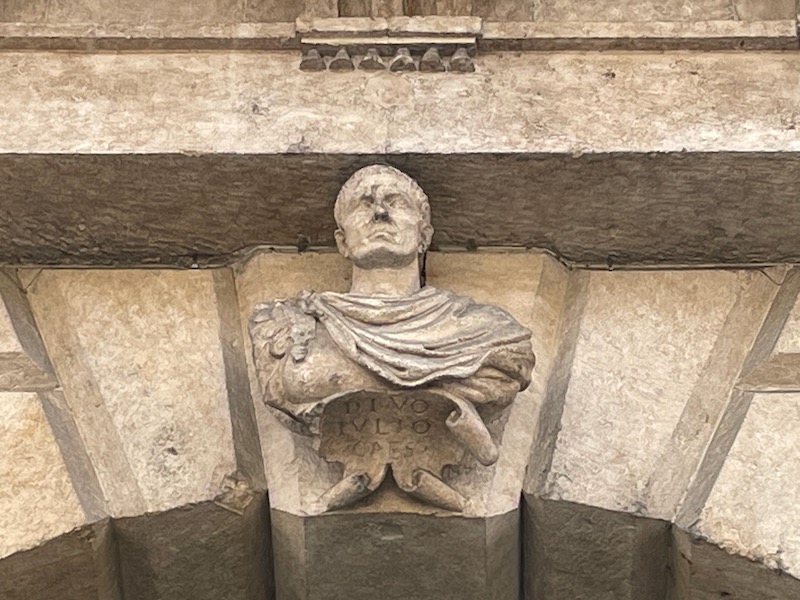
Just up the road from these 15th and 16th century palaces is a Roman gate that dates back to the 1st century BC. This was the gate on the main access route into the city and is built of white stone.
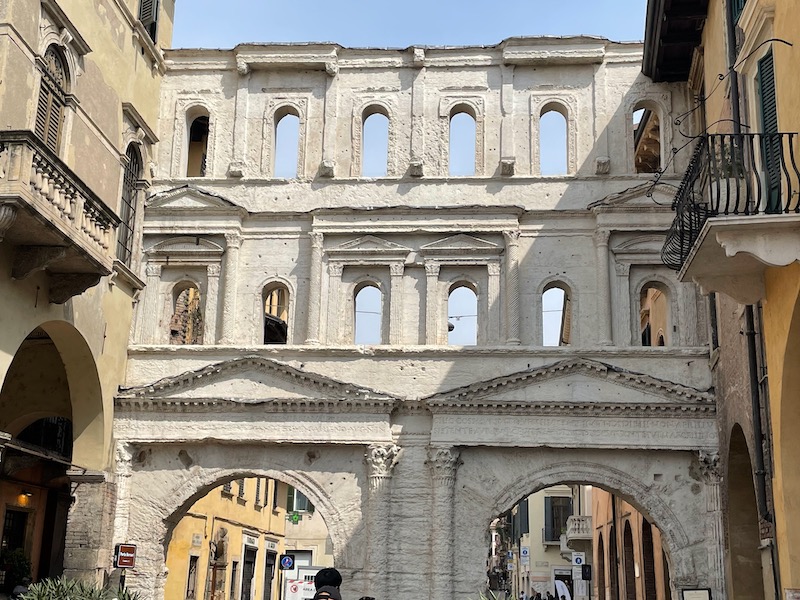
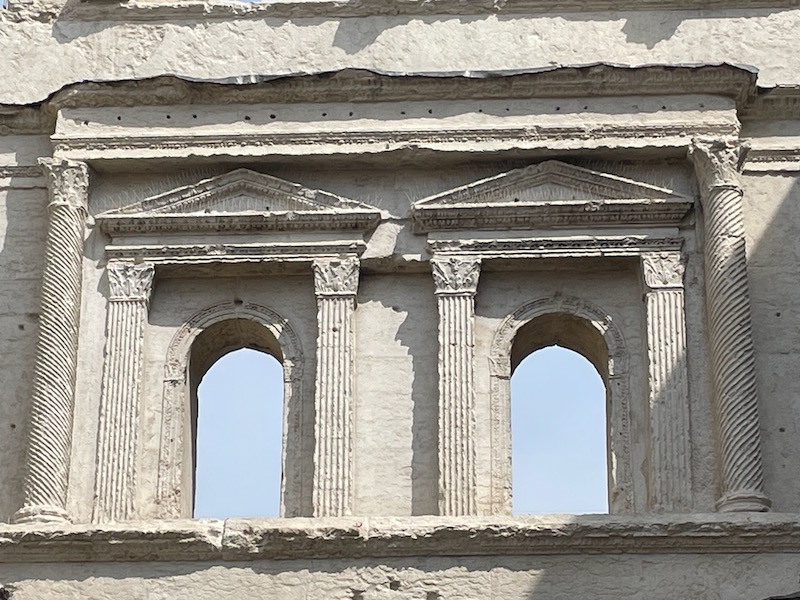
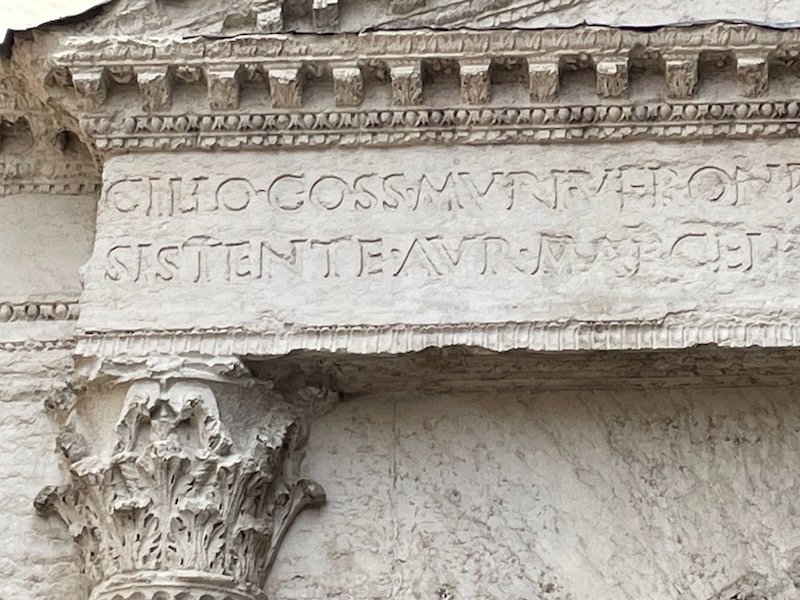
The present Baroque-style Church of San Nicola was built between 1627 and 1683 on the site of an earlier Romanesque church which had existed since the 12th century. The church's façade remained incomplete until the neoclassical façade of the church of San Sebastiano was relocated to San Nicolò in the 1950s, after the former church was destroyed during World War II.
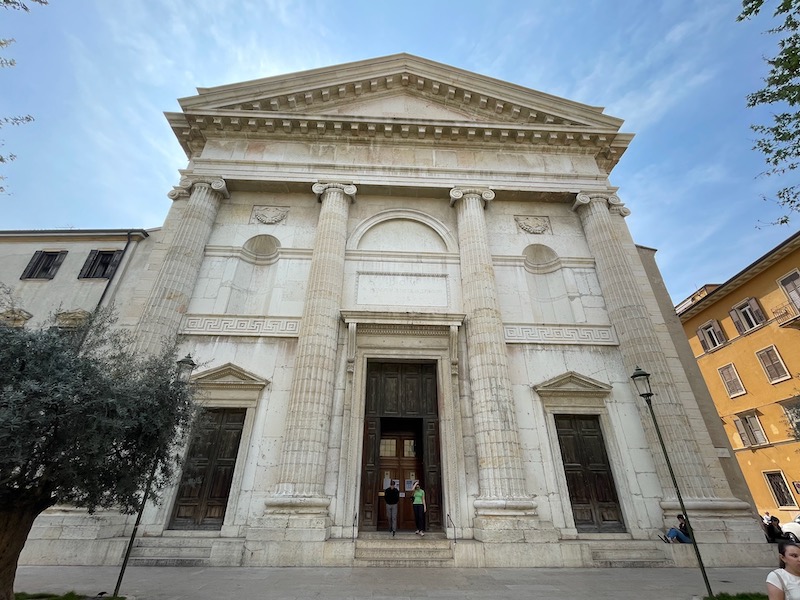
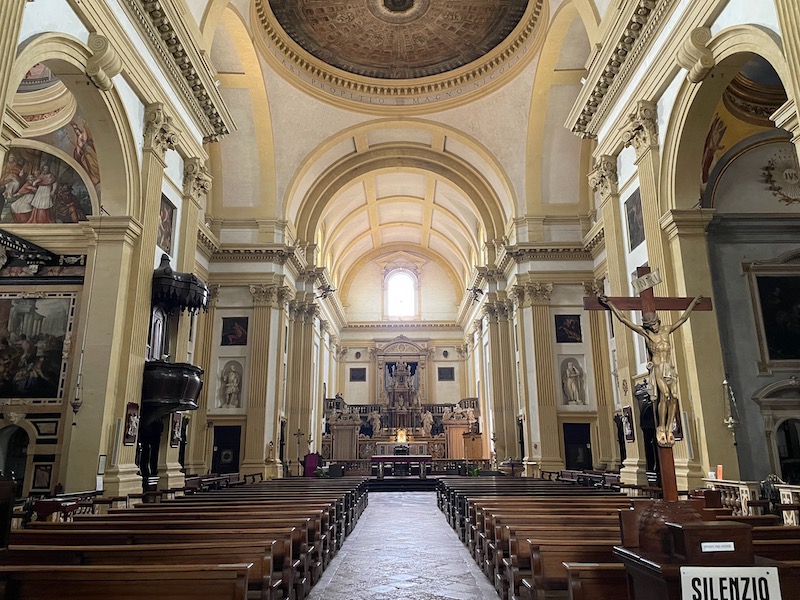
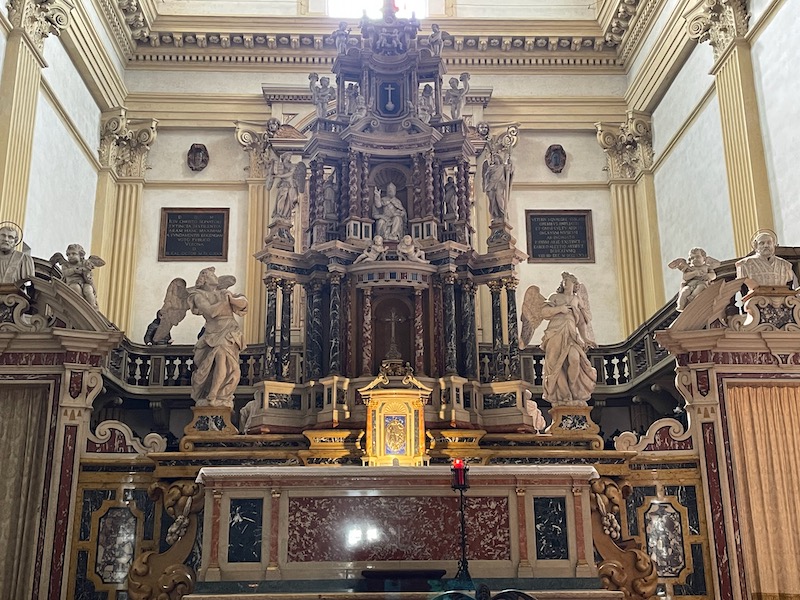
There are only a few stained-glass windows and they are abstract and date from the late 1990's.
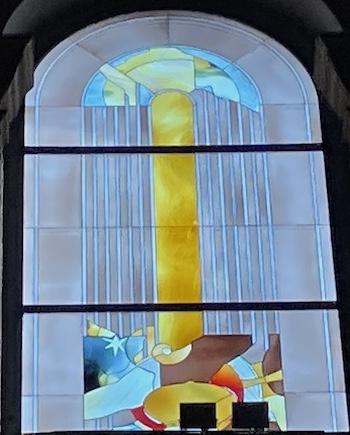
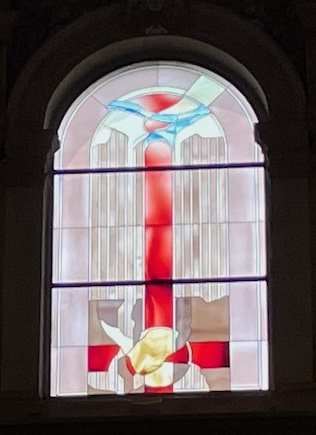
Probably the most impressive thing in Verona so far is the Roman Arena, a Roman amphitheater that was completed around 30 AD. Unfortunately for us, it was closed for work when we were here, so we couldn't go through it. But you can get a good view of the arena from the large open square next to it. The majority of the arena is still intact, with only the outer ring being mostly destroyed (you can see the one remaining section of the outer ring in these first pictures). They hold lots of events here, including concerts and operas. A bit of trivia: the 2026 Winter Olympics, known as "Milano Cortina 2026" will hold the closing ceremonies here at the Verona Arena.
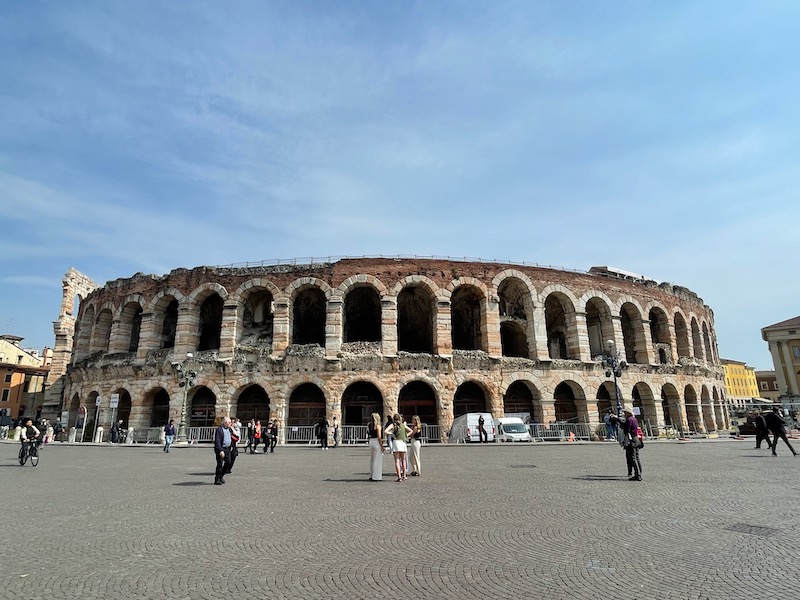
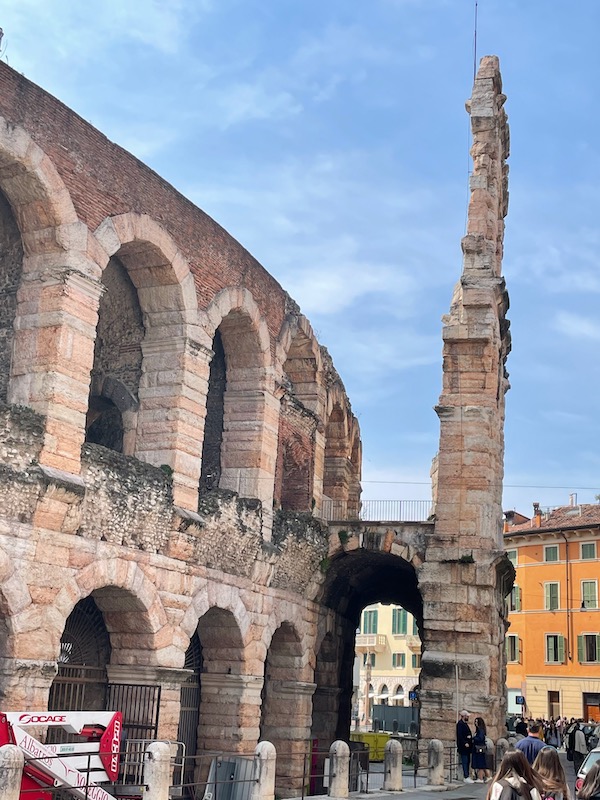
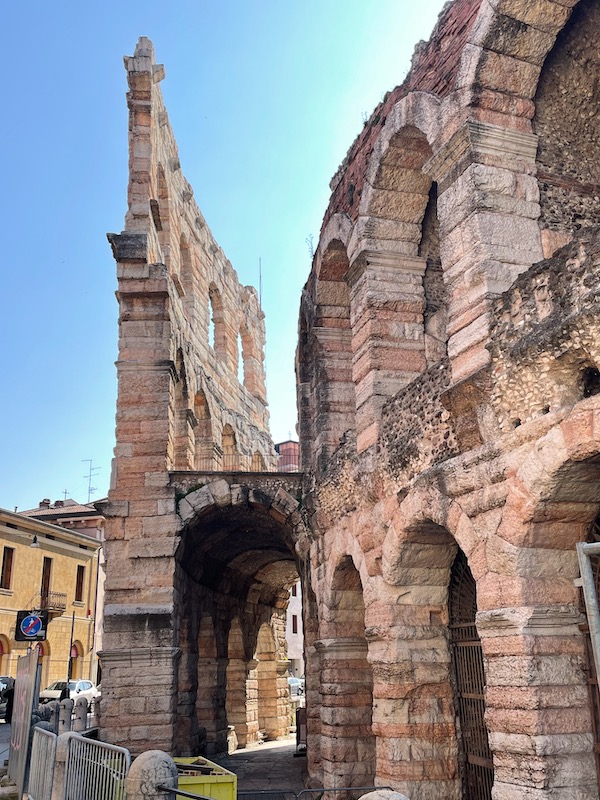
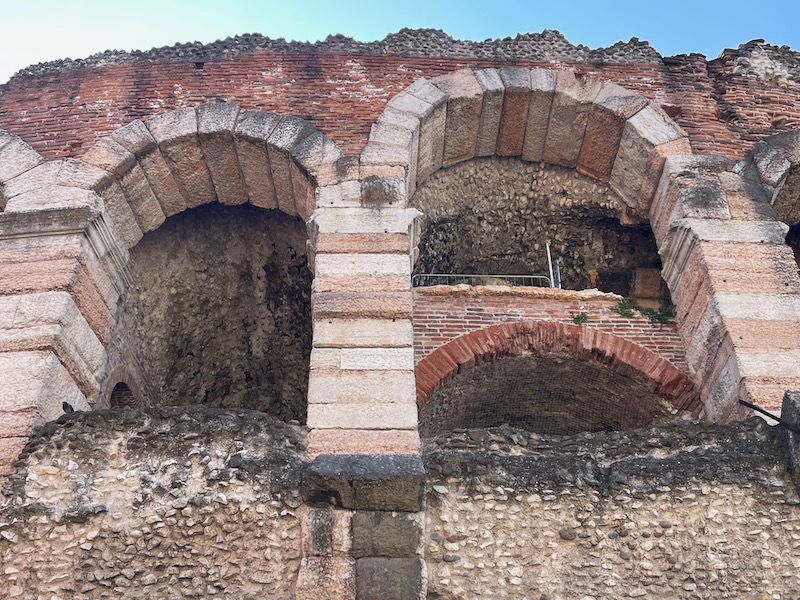
The large open square next to it has a bronze equestrian statue of King Victor Emmanuel II, unveiled in 1883. Talk about a long name .... his full name is Vittorio Emanuele Maria Alberto Eugenio Ferdinando Tommaso di Savoia. He was the first King of an independent, united Italy since the 6th century, a title he held from 1861 until his death in 1878.
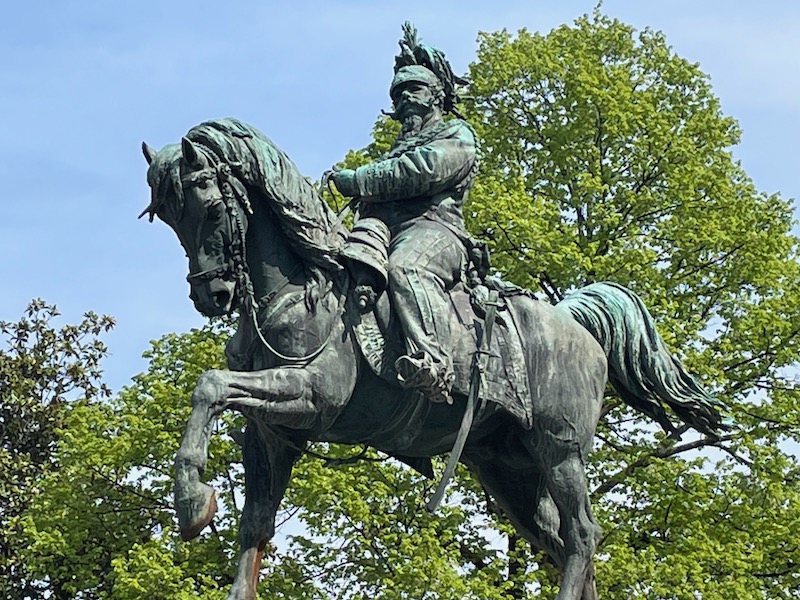
The Verona Castle, or Castelvecchio sits right on the river and the Castelvecchio Bridge is part of the castle. It was built by the Scaliger dynasty, who ruled the city in the Middle Ages. It is made out of red bricks in a Gothic style with M-shaped merlons running along the top of the castle and bridge walls. It has 7 towers, and a keep with 4 buildings. The main buildings now house a museum. The fortified bridge was intended to allow the Lord and his family to escape safely northwards in the event of a rebellion or a coup d'état.
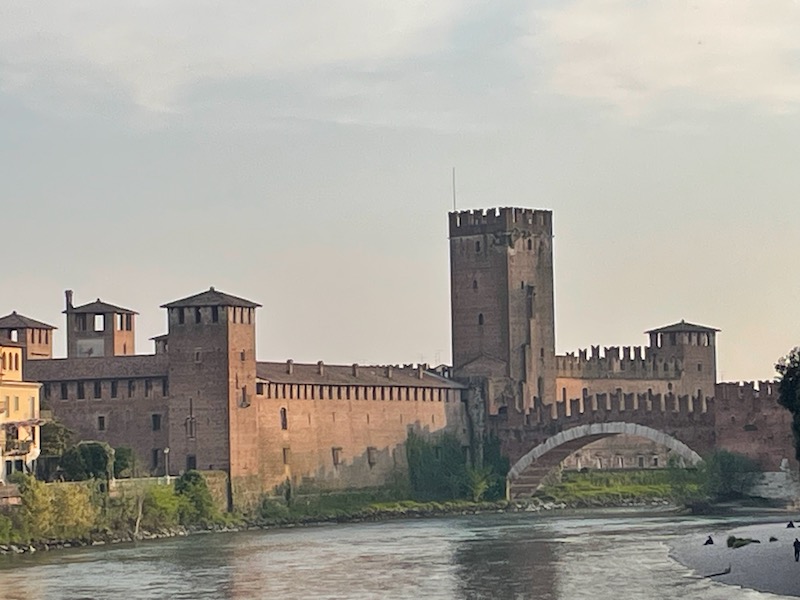
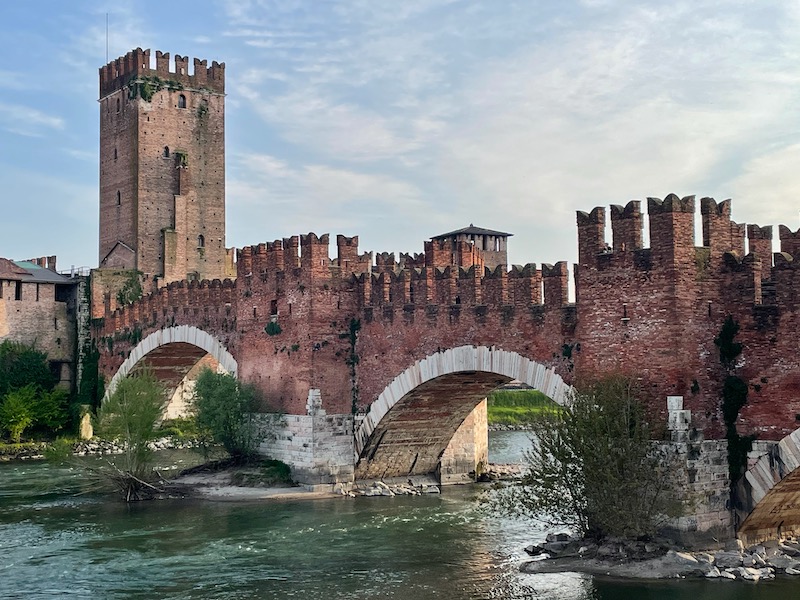
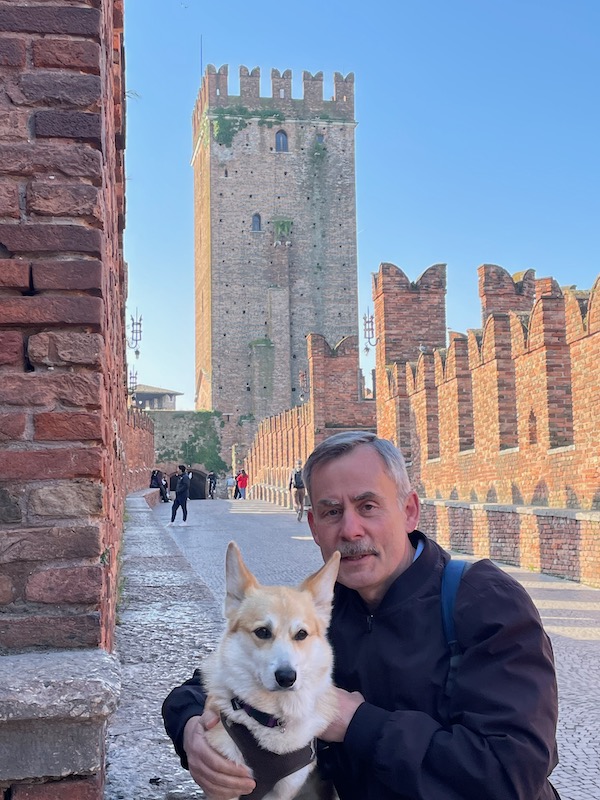
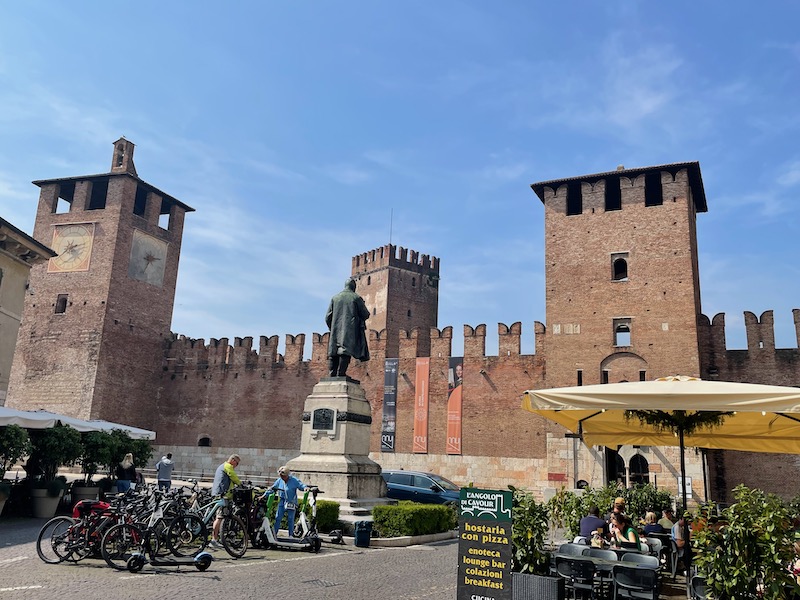
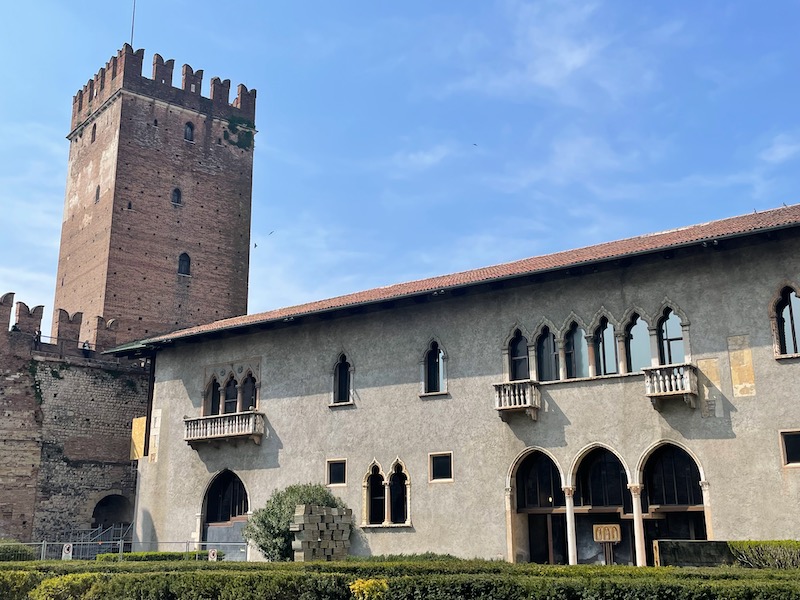
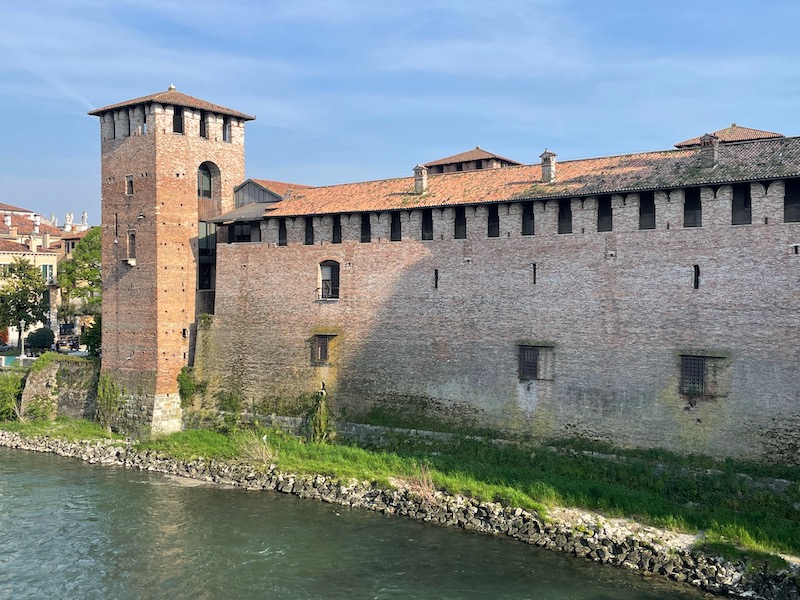
The Basilica of San Zeno complex, built between 967 and 1398, includes the church, a 13th century tower from the early monastery, and a slender 12th century bell tower. The church and convent had been built on the spot where Saint Zeno had been buried. He is most often represented with fishing-related items such as a fish or fishing rod, and is the patron saint of fishermen. The portal is flanked by 18 12-century bas-reliefs which mainly portray scenes from the New and Old Testament. Above the door is a lunette with scenes of the Veronese history of the time, including The Consecration of the Veronese Commune (left), St Zeno stamping on the Devil (middle), and St Zeno delivering a banner to the Veronese people (right).
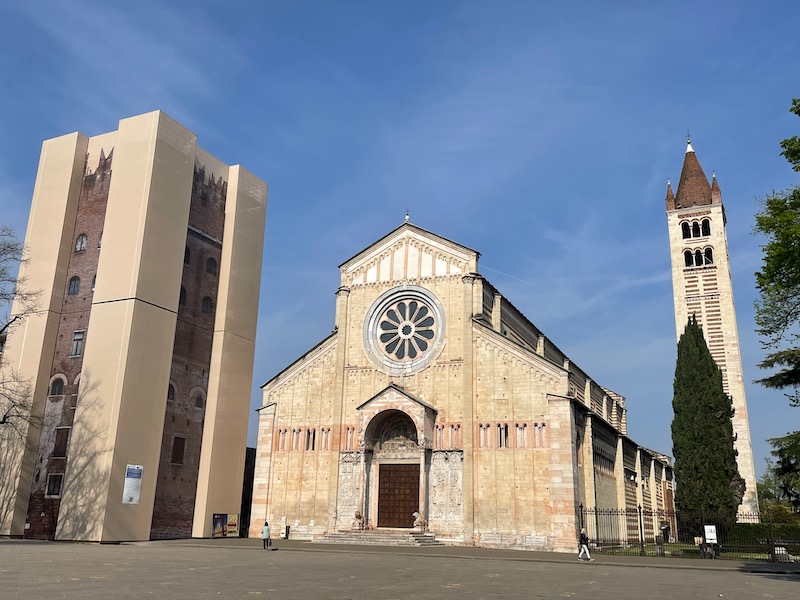
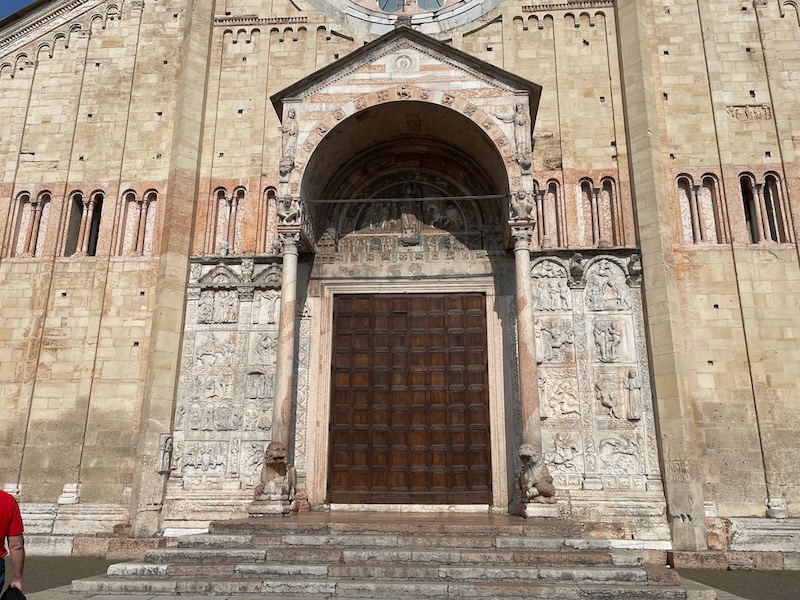
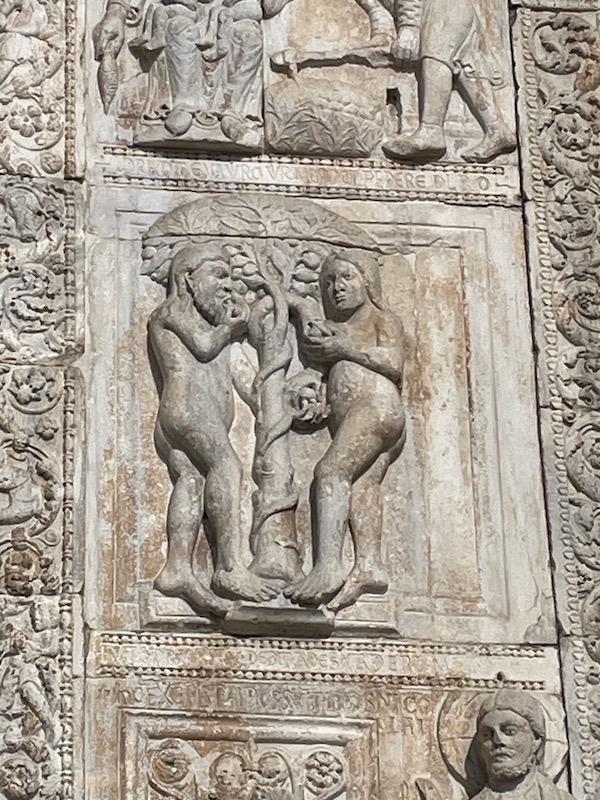
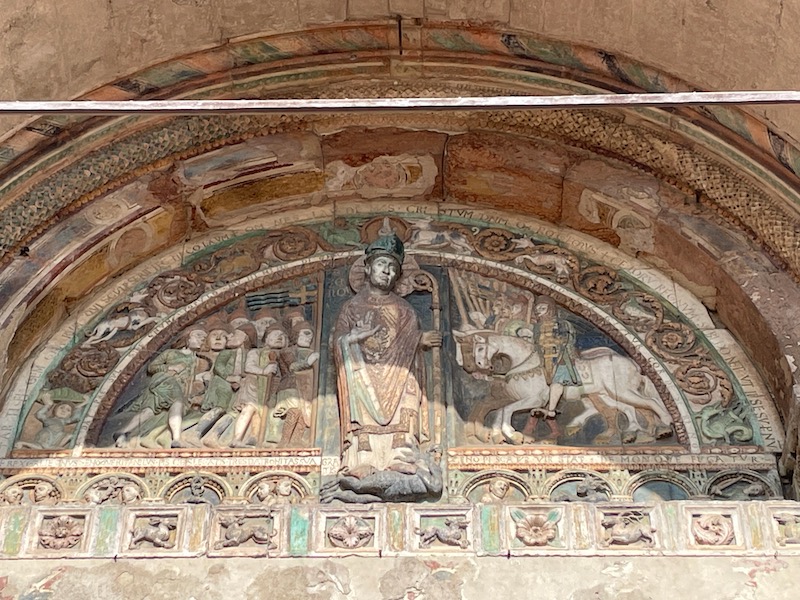
The church is separated into 3 spaces: the nave (sometimes called the middle chapel), the raised presbytery (or upper chapel) and the crypt. Here you can see the Romanesque arches that separate the nave from the side aisles. Where you see the people further ahead of me, that is where you can go downstairs to the crypt (under the 3 arches) or up to the raised presbytery (at the 2 side aisles). On the balustrade over the crypt entrance are painted statues of Christ and the disciples (you can still see some of the paint).
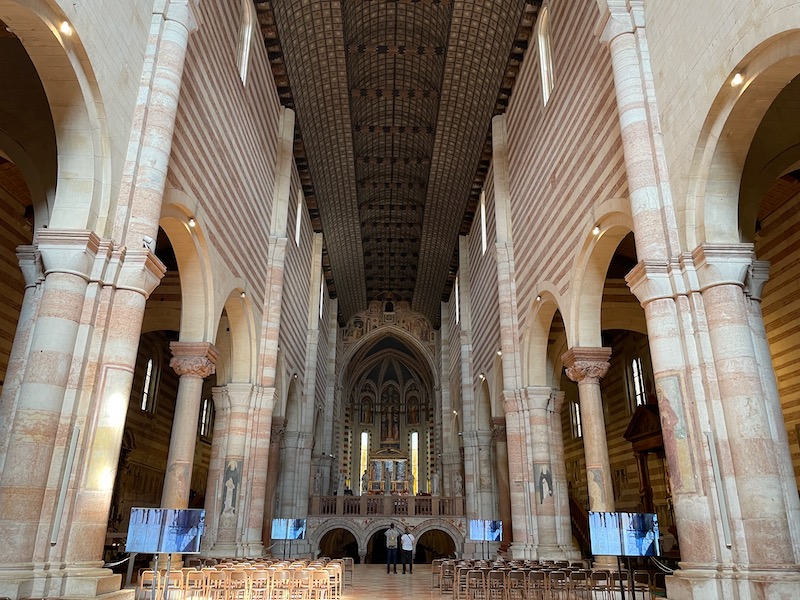
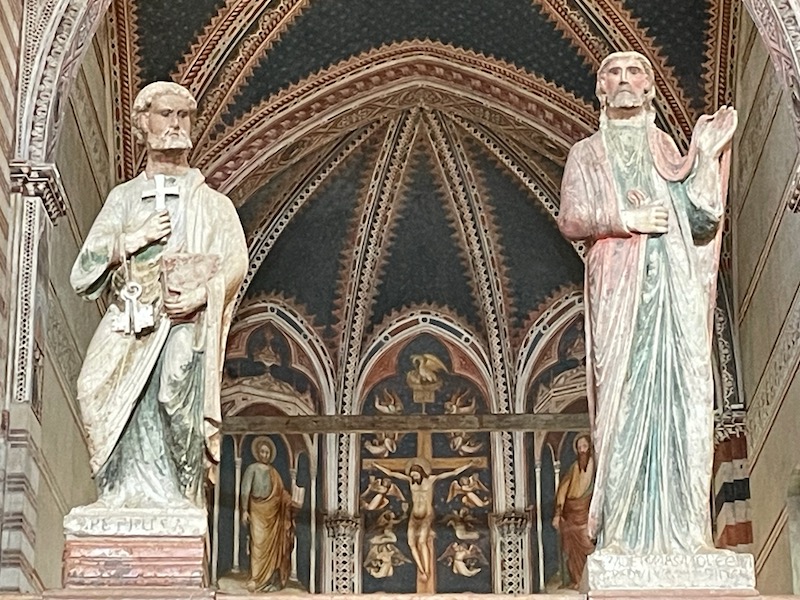
The Bronze Doors are decorated with 48 square panels dating from the 11th - 13th centuries. The scenes mainly represent scenes from the Old and New Testaments, and were created by various different craftsmen in different time periods and styles. Compare the first close-up with the horse to the 2nd close-up, which is the Last Supper, to the last one, which is Noah and the Ark.
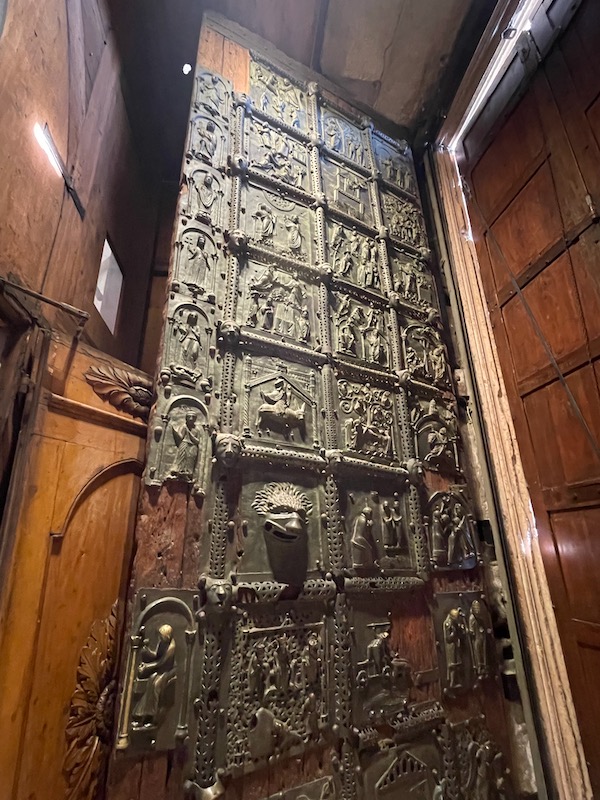
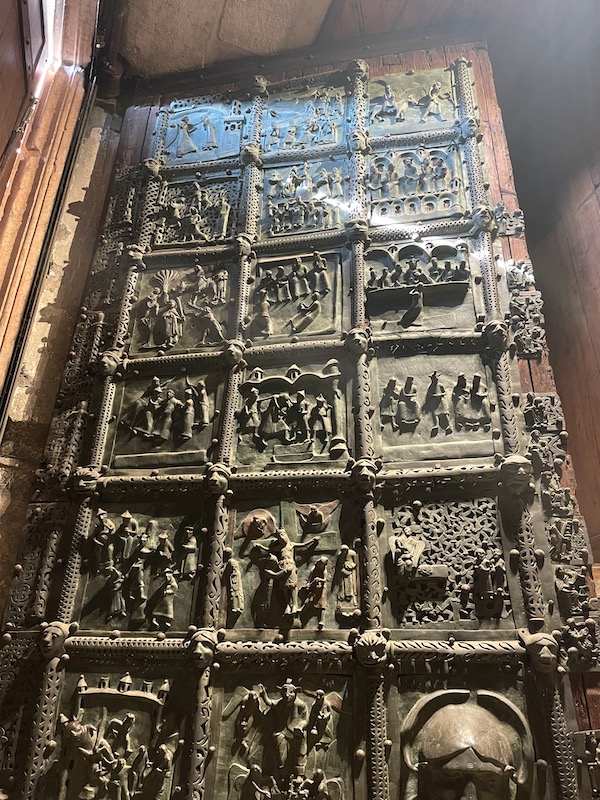
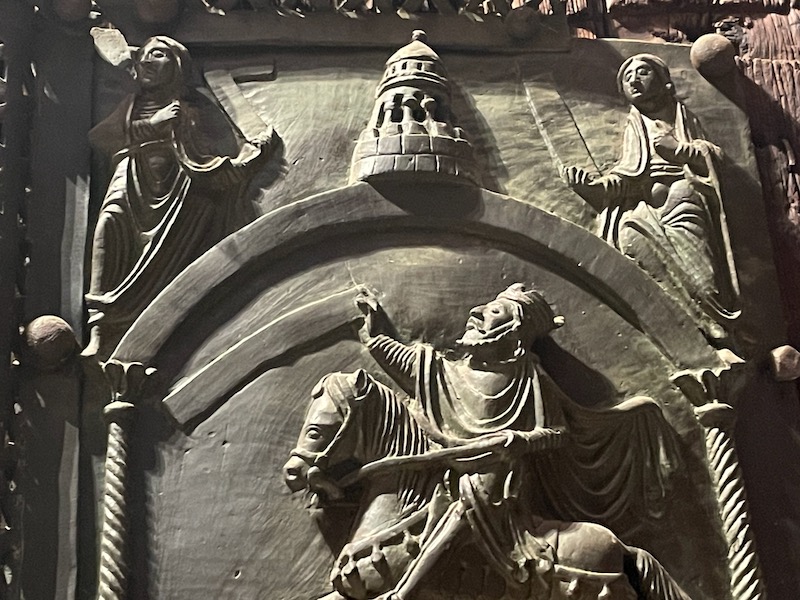
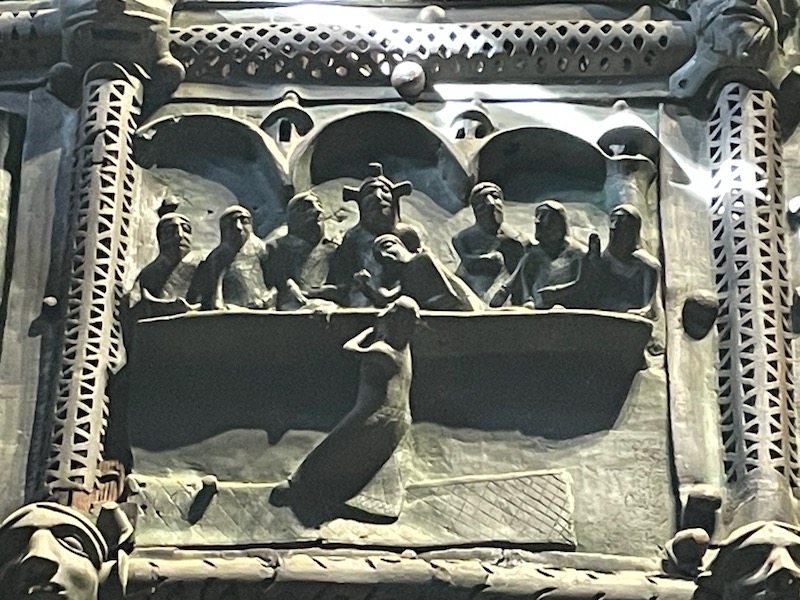
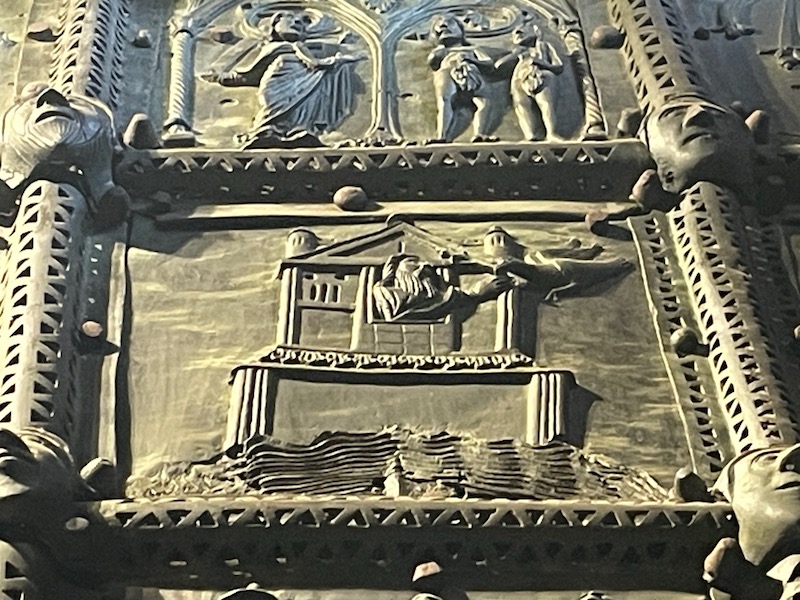
Now taking the stairs up to the raised presbytery, you can see the Gothic main chapel, which dates back to the 14th century. On the altar is a famous Triptych by Andrea Mantegna which represents a Sacred Conversation between the enthroned Virgin and the saints. The detailed picture is the left side, showing Saint Peter (in a yellow cloak holding a set of keys); Saint Paul (wearing a light purple cloak); Saint John the Evangelist (in a green cloak shown looking into a book he holds); and Saint Zeno (shown as bishop and wearing a mitre).
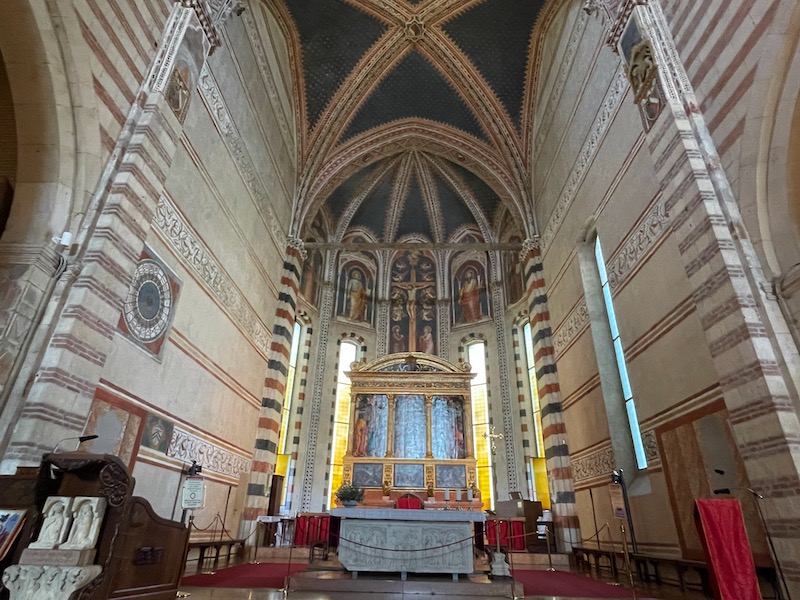
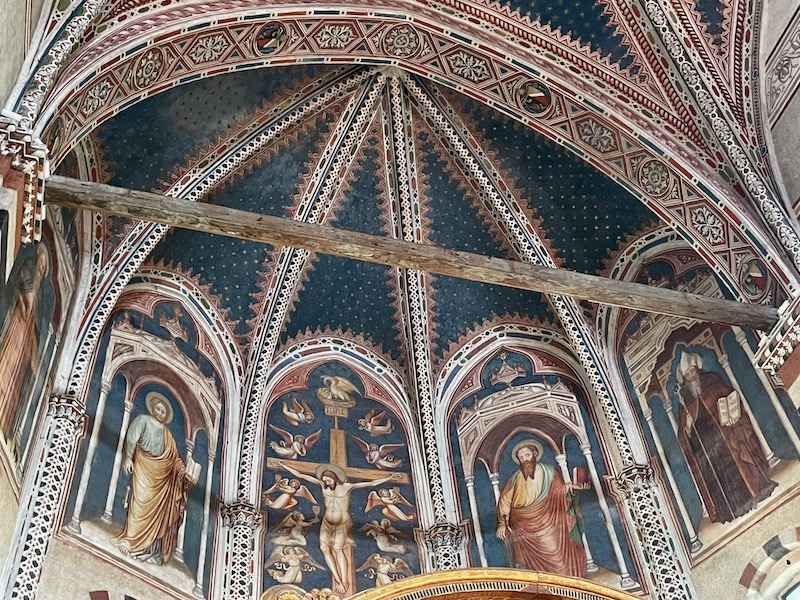
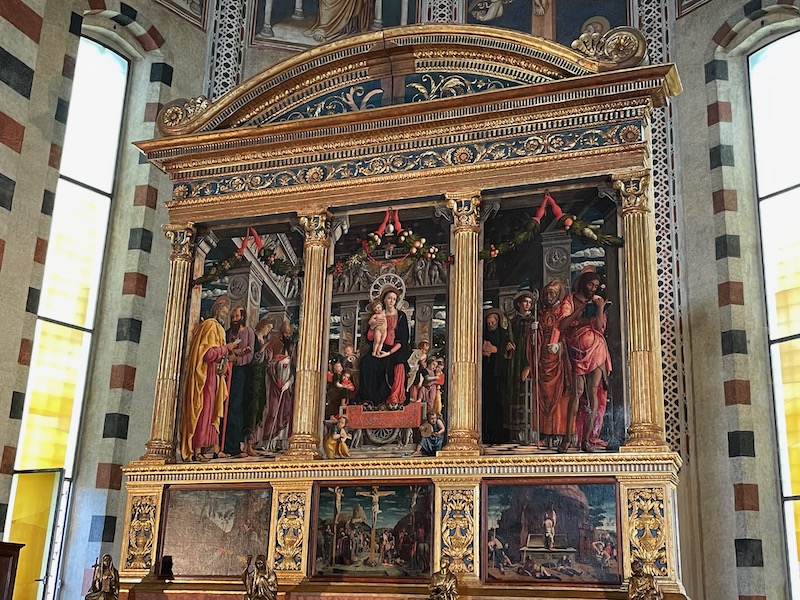
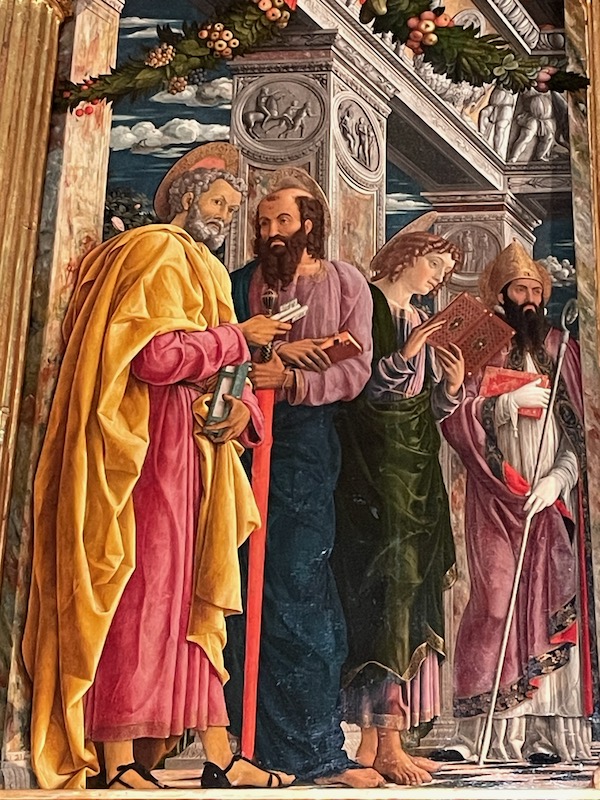
The predellas (the smaller ones below) are actually copies of the originals (the closeup shows the Resurrection), which were stolen by Napoleon when he invaded Italy and are now housed in the Louvre Museum in Paris.
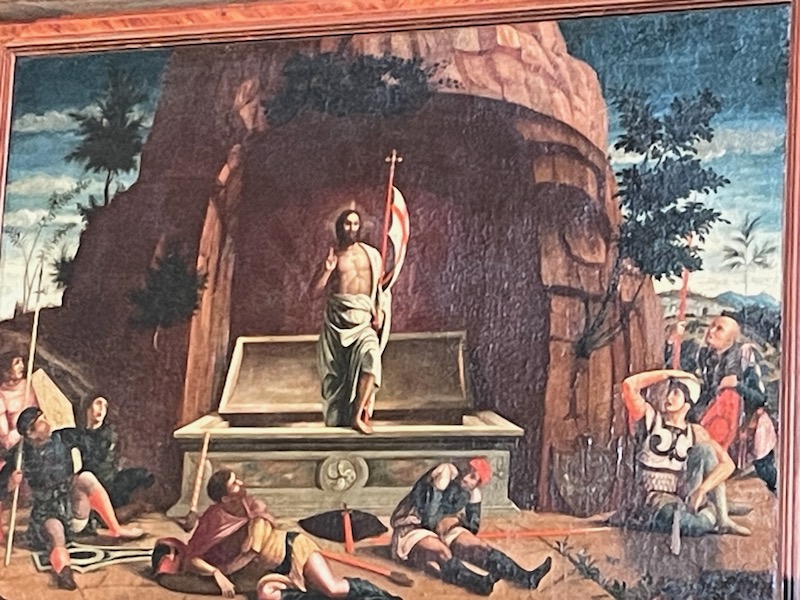
The crypt was built in the 13th century and you can see all of the red marble columns holding up the arches at the bottom of the stairs. I did a close-up of the colored detailed carvings on the arches as well as one of the old frescoes.
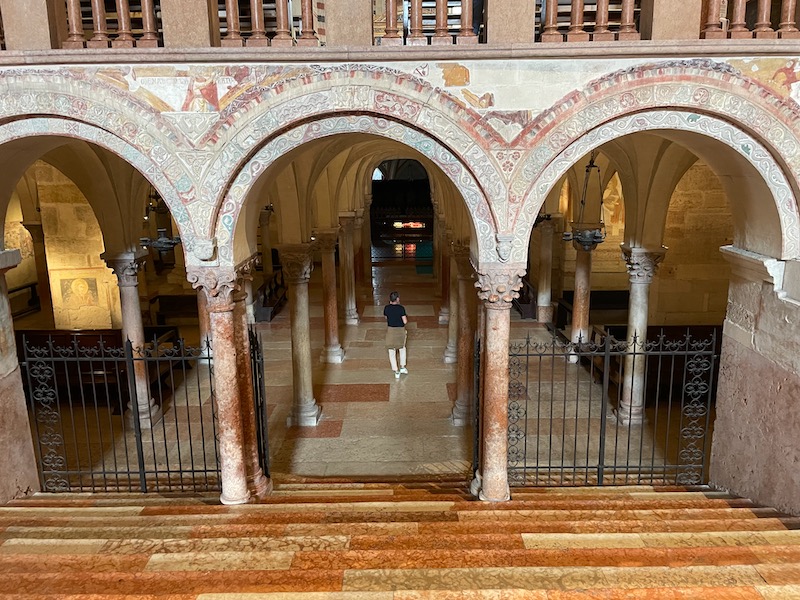
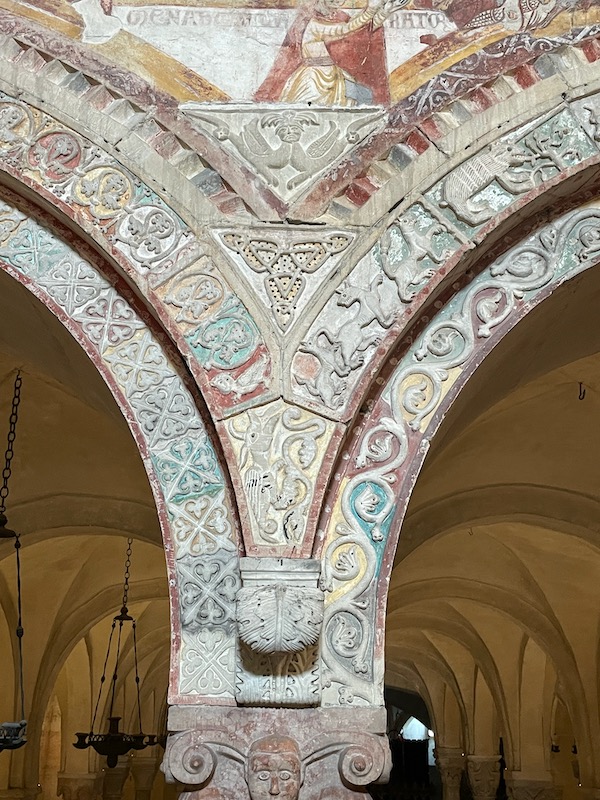
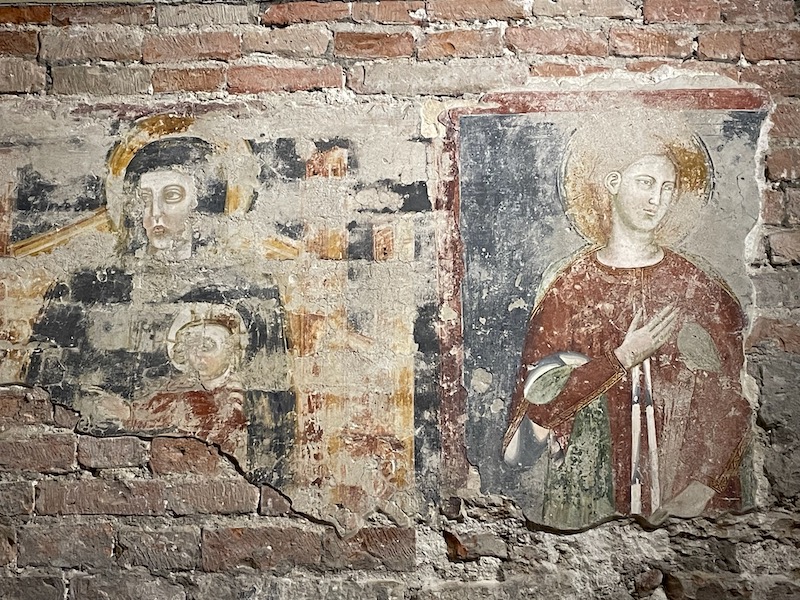
A couple of frescoes around the church ... the first one being Saint George slaying the dragon. The 2nd one shows the Last Supper with an interesting twist. You can see scorpions on the table, which historically are a symbol of betrayal.
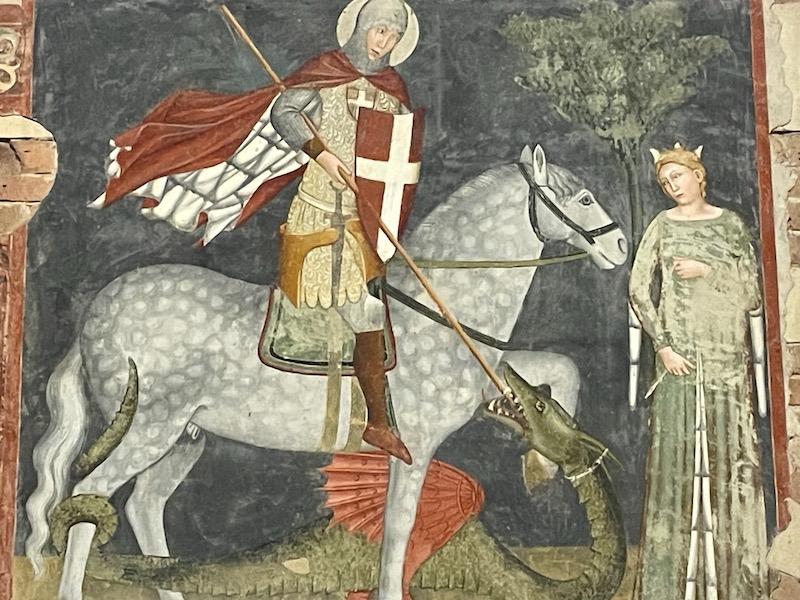
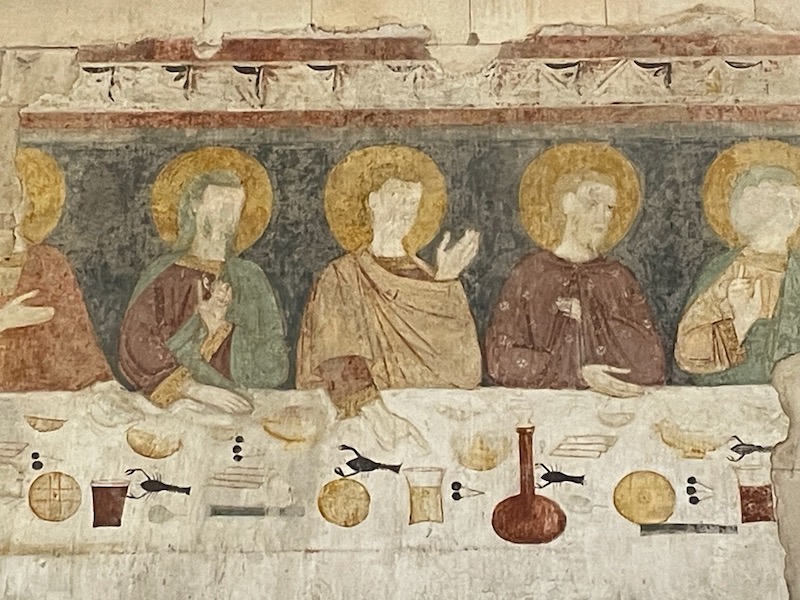
The large Porphyry cup dates to the 2nd century AD and was originally in a Roman thermal bath. Legend has it that it was transported here by the devil, on the orders of Saint Zeno.
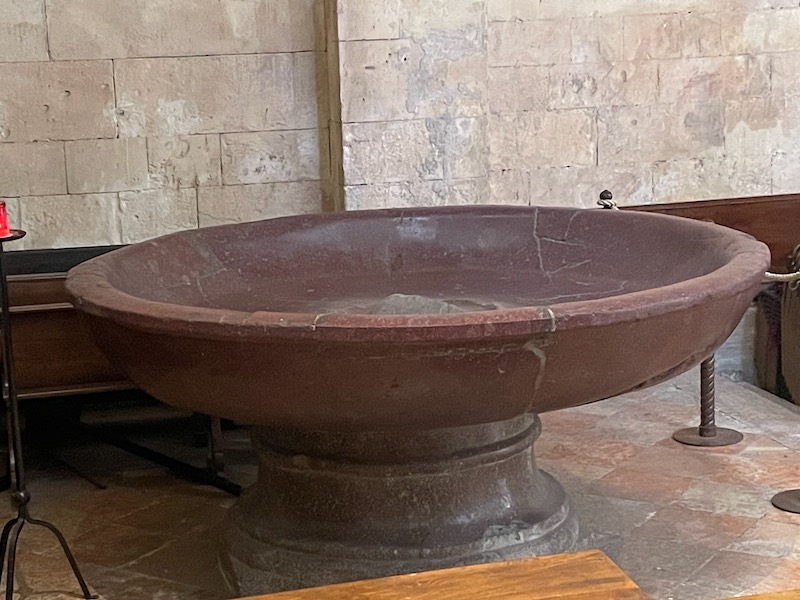
This old cross is from 1360, and is hanging over the baptismal font. It was carved from a single block of marble in the 13th century.
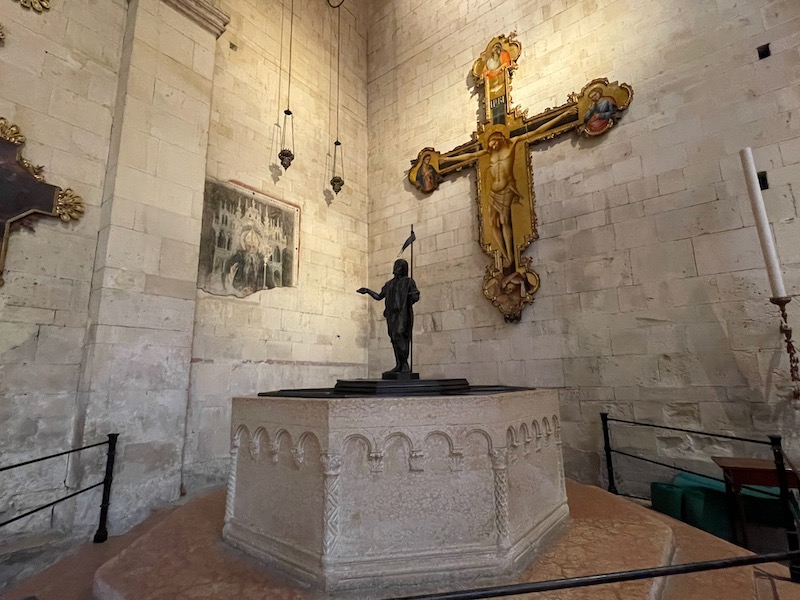
This marble statue of Saint Zeno, sometimes call the Laughing Saint Zeno, dates from the 13th century. He was supposedly born in Mauritius and is shown with dark skin.
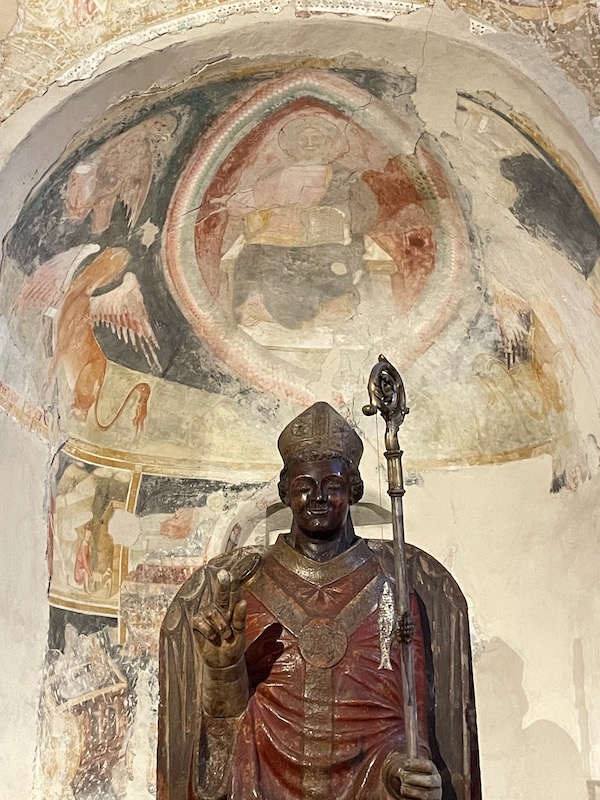
This is interesting ... you have seen so many frescoes in the various churches. Here you can see how they would paint new frescoes on top of others. The bottom part has a man wearing a blue tunic and a red cape, which is older than the newer one on top, with part of a cross visible. The line that you can see is the where the inch-thick layer of plaster that was put on top of the older painting to do the newer one has been removed.
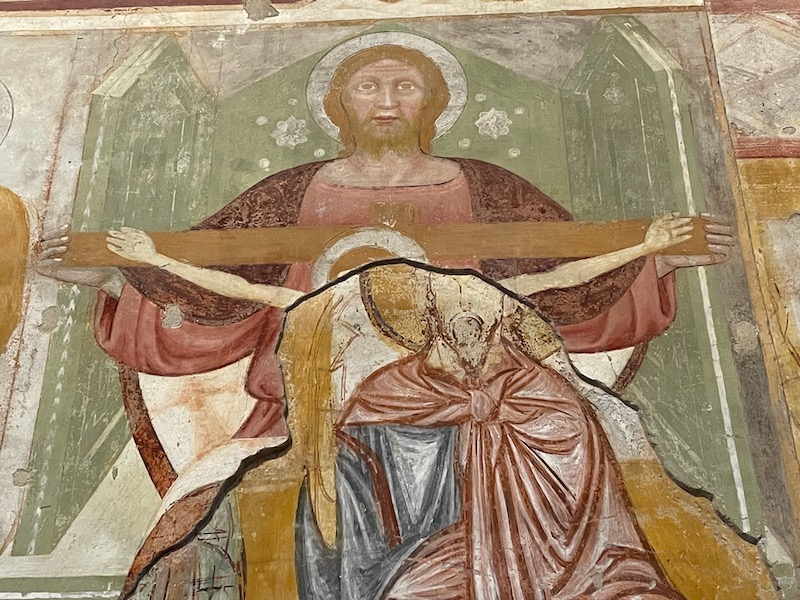
The cloister was built in the 10th century and renovated in the 14th century. If you look at the arches ... those on the left and the center section are rounded (Romanesque) while the ones on the right are pointed (Gothic). The center section that juts out into the garden was a wash-house for the monks.
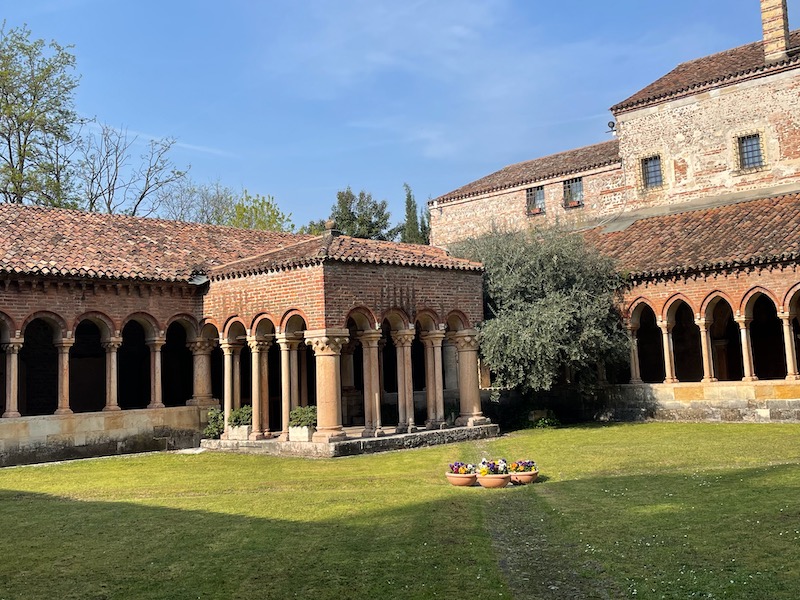
The church of San Bernardino dates back to the 15th century and is part of a Franciscan convent. The facade of the church is pretty plain, late Gothic or Lombard Gothic style. The inside is a bit interesting ... it seems to have started as purely a rectangular single-nave church but then side chapels were added to one side (and one side only). The main part of the church is also pretty plain with the exception of some of the chapels that are highly decorated.
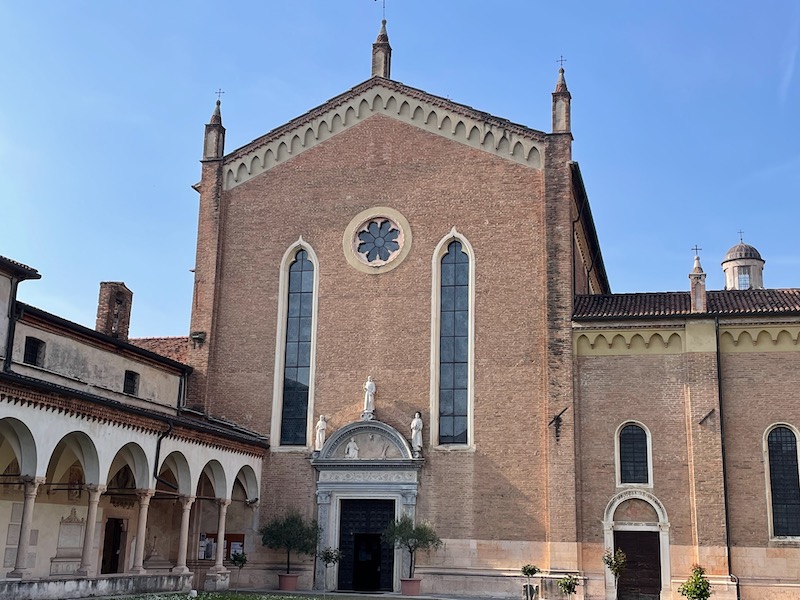
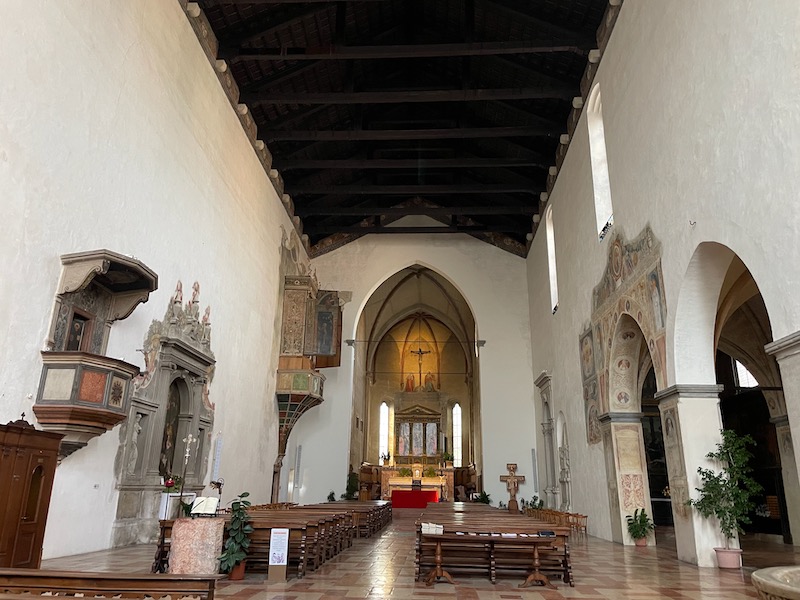
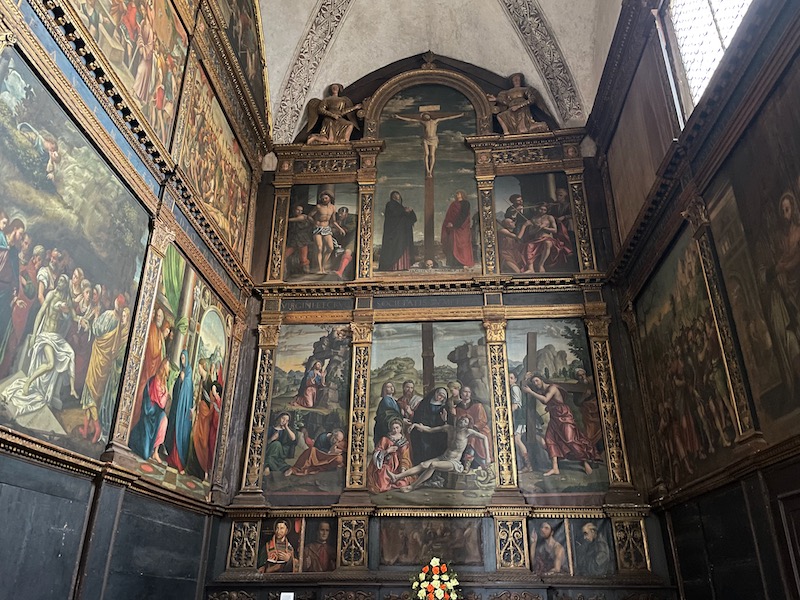
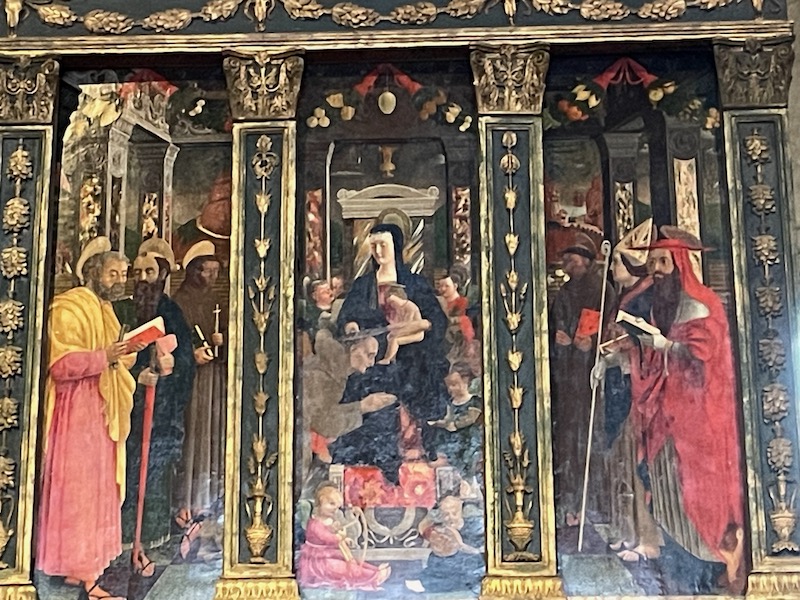
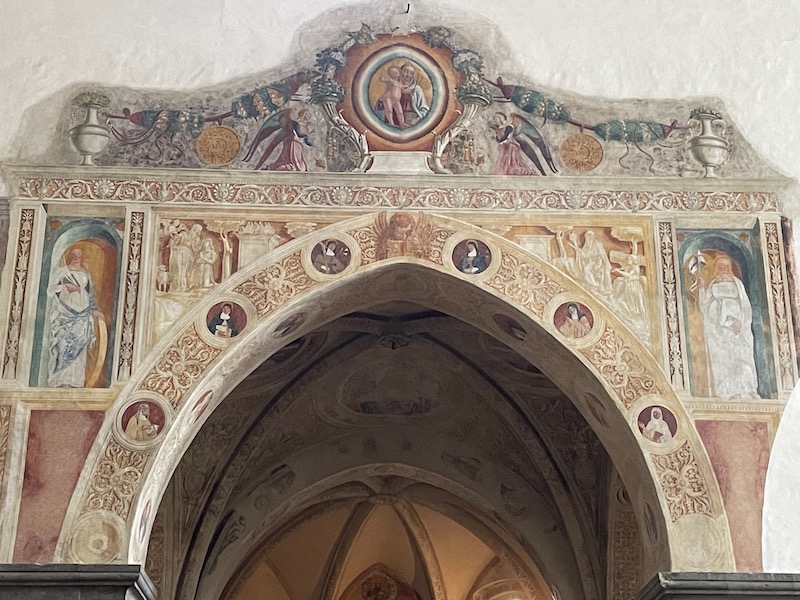
This is an unusual position for Lucy ... resting her chin on the front of her crate door ... she looks like she wants to go to dinner with us :-)
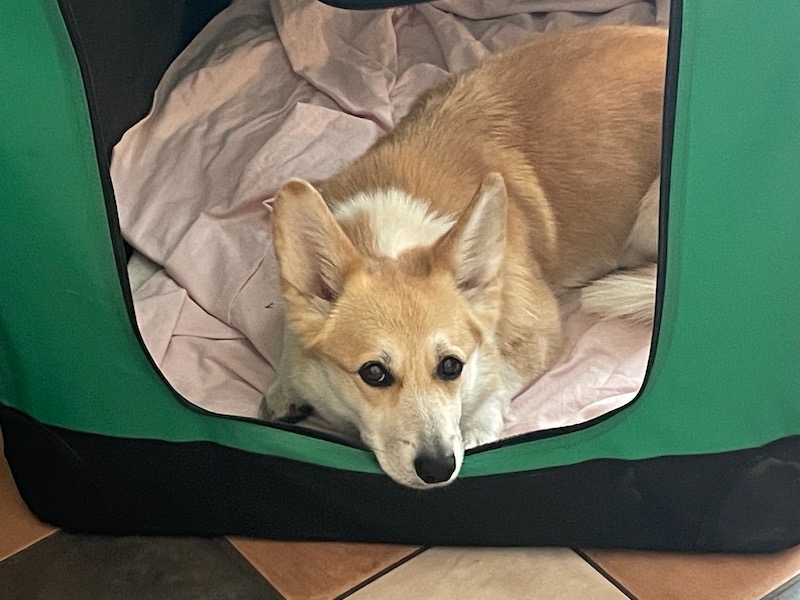
Now you can continue directly to the Part 2 blog (split only because it would take too long to load otherwise).